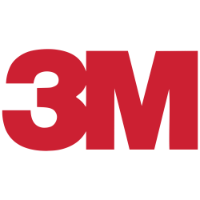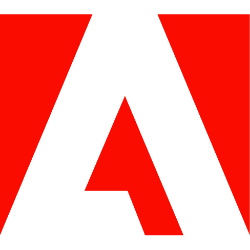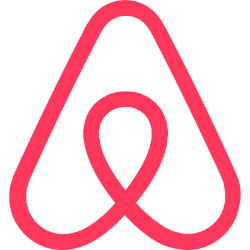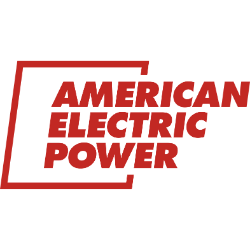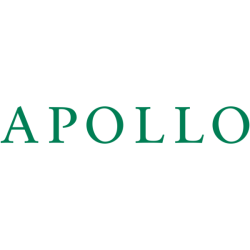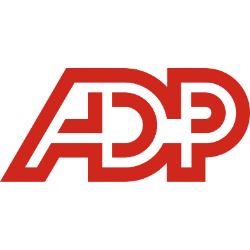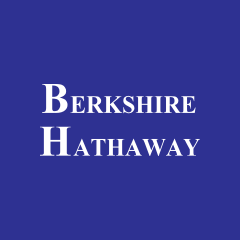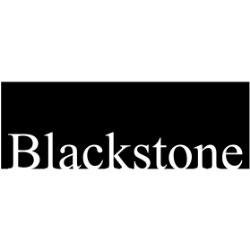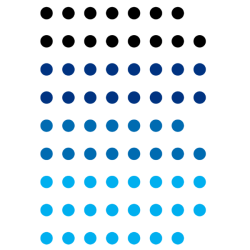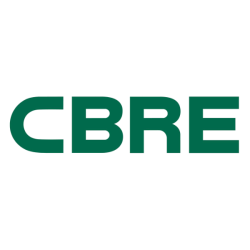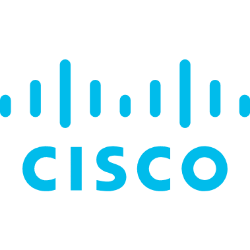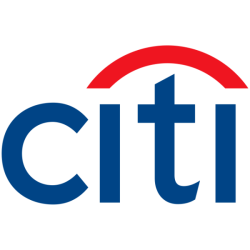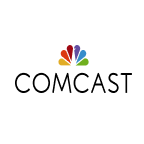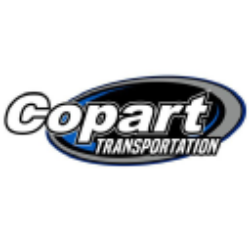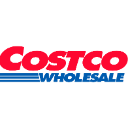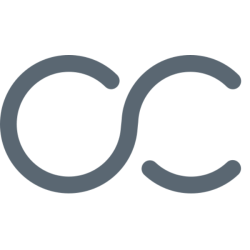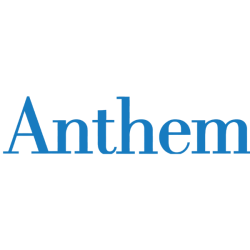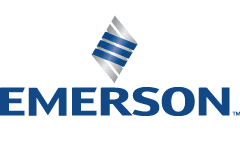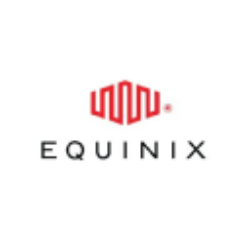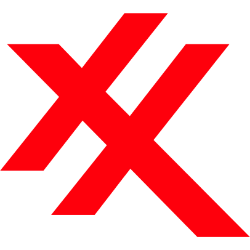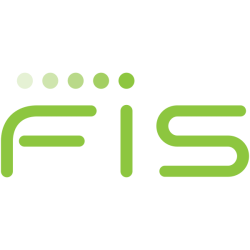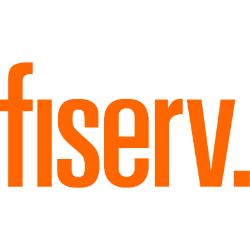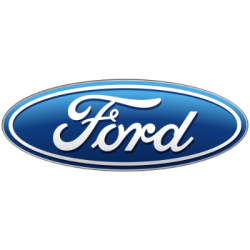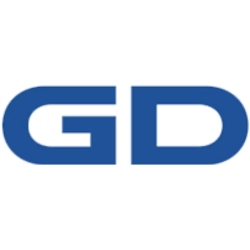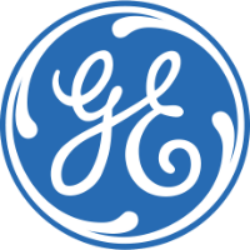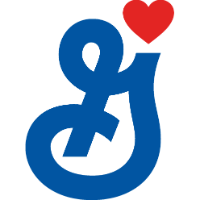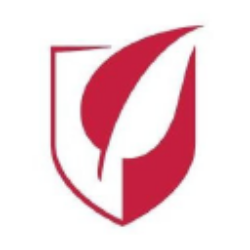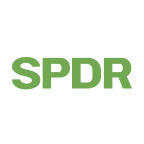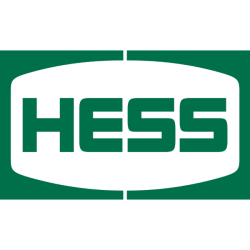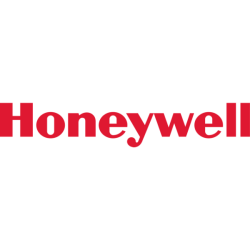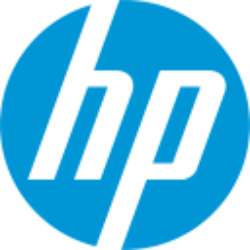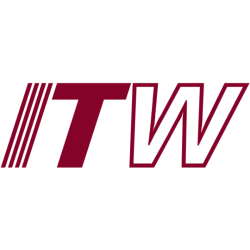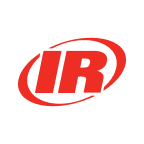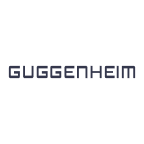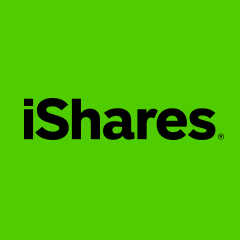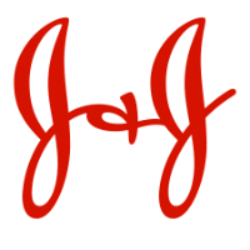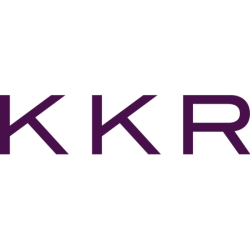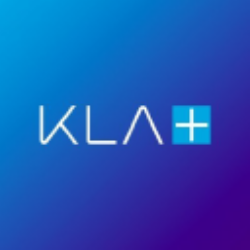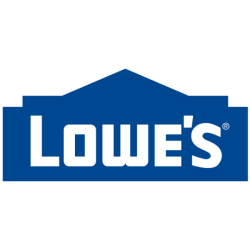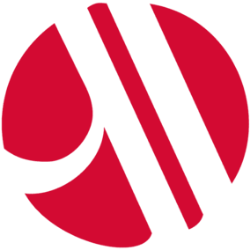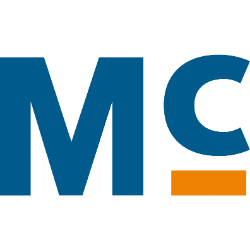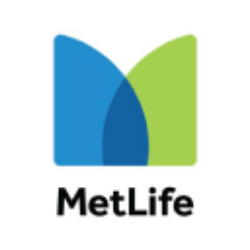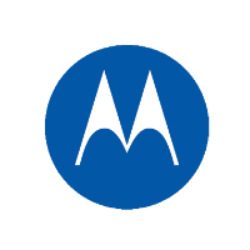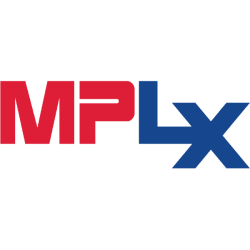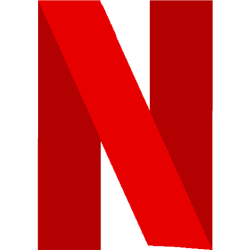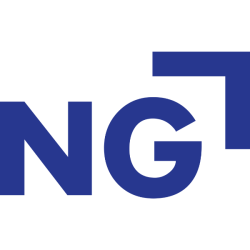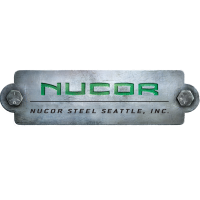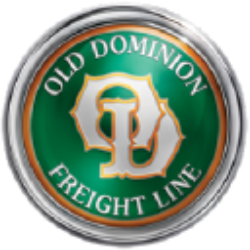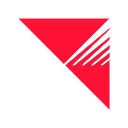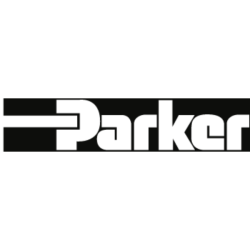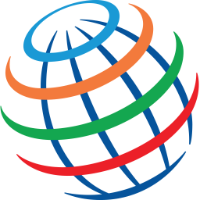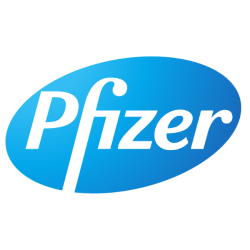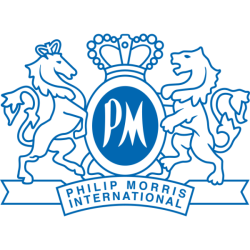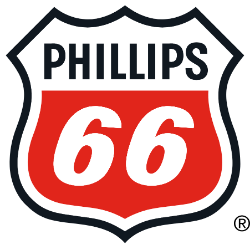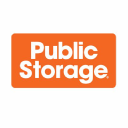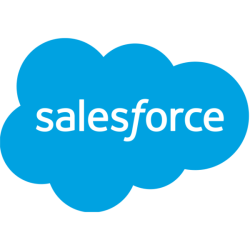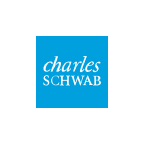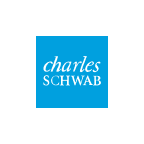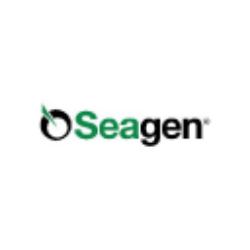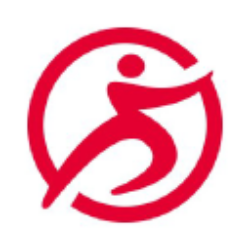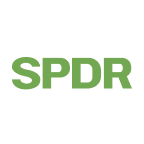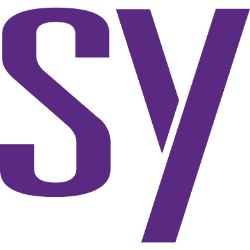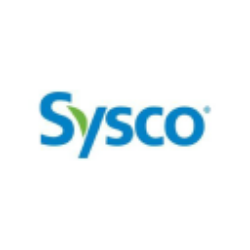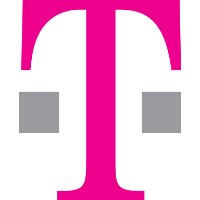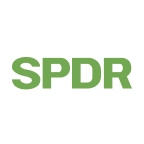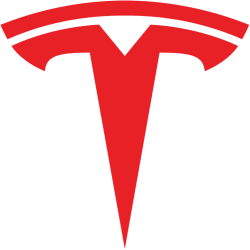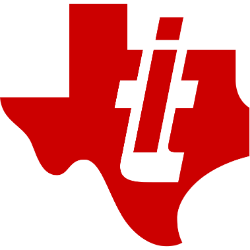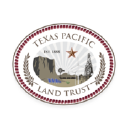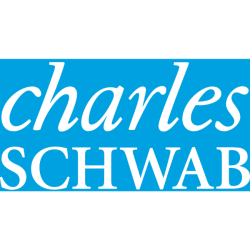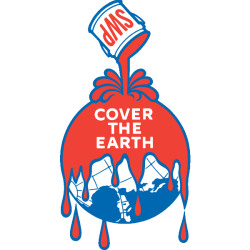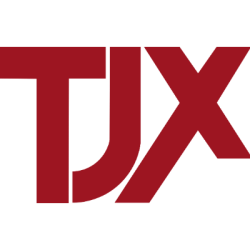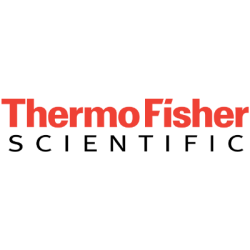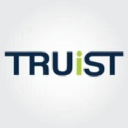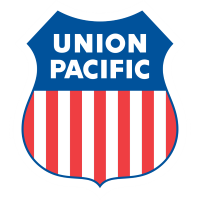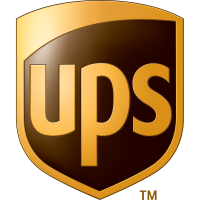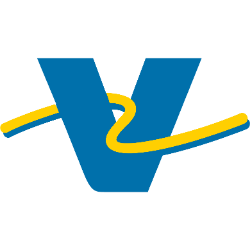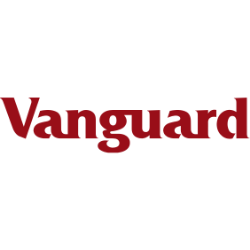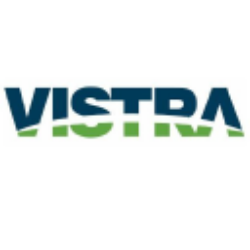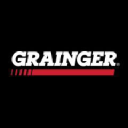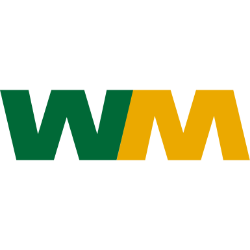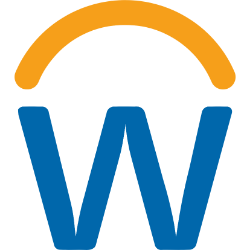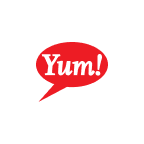Updated: June 7, 2025

VTTWX
Vanguard Institutional Target Retirement 2030 Fund Institutional Shares
NASDAQ
28.83
-0.24

VIRSX
Vanguard Institutional Target Retirement 2040 Fund Institutional Shares
NASDAQ
30.89
-0.36

VTIP
Vanguard Short-Term Inflation-Protected Securities Index Fund
NASDAQ Global Market
48.87
0.01
We have not found the stock you are looking for
Ticker
Loading
Market Cap
Loading
Revenue
Loading
EPS
Loading
PE Ratio
Loading
Volume
Loading
Dividend
Loading
Week Range
Loading
Beta
Loading
Frameworks
Name
Score
Company Overview
Loading
The Coca-Cola Company
Country
Loading
Founded
Loading
IPO Date
Loading
industry
Loading
Employees
Loading
CEO
Loading
Top News
Economic Moat Analysis
-
Analysis
-
Analysis
-
Analysis
-
Analysis
-
Analysis
-
Analysis
-
Analysis
-
Analysis
-
Analysis
-
Analysis
-
Analysis
-
Analysis
-
Analysis
-
Scoring
- Information
1. 10Y Growth Analysis
Score: 8.5 (Strong)
This overall score reflects Coca-Cola's strong strategic positioning and proactive approach in adapting to market trends and consumer preferences. The company demonstrates steady growth prospects, driven by innovation, sustainability, and global brand strength.
2. Scenario Analysis
Score: 8.1 (Strong)
Coca-Cola demonstrates resilience across most scenarios, with robust strategies in place to handle market expansion and regulatory changes. Challenges remain in stress scenarios, where the company could face mixed outcomes depending on its adaptability to rapid technological and economic shifts. Score without stress scenario: 8.3 – Resilient
3. Risk & Opportunities
Score: 6.7 (Balanced)
The overall score reflects a balanced mix of risks and opportunities for Coca-Cola. While the company faces challenges from health-related concerns and environmental issues, its strategic initiatives in product diversification, market expansion, and sustainability present significant growth opportunities.
4. Economic Moat
Score: 8.0 (Strong)
Coca-Cola demonstrates a strong economic moat with a wide competitive advantage in intangible assets, largely due to its brand recognition and proprietary formula. The company maintains a strong position in cost advantages and efficient scale, supported by its global reach and operational efficiency. While the network effects and switching costs are narrower, they still provide a substantial competitive edge.
5. Business Model
Score: 8.7 (Strong)
Coca-Cola's business model is robust, with strong brand equity, diverse product offerings, and a global presence. The company effectively leverages its resources and partnerships to maintain market leadership while pursuing growth through innovation and sustainability initiatives. Minor improvements could be made in adapting to rapidly shifting consumer preferences, particularly in health trends.
6. Management Analysis
Score: 8.2 (Strong)
The management at KO demonstrates strong leadership capabilities, strategic focus, and operational competence. The team's ability to adapt to market changes and maintain stability reflects positively on its effectiveness. Continued emphasis on innovation and sustainability will be crucial for future success.
7. BCG Matrix
Score: 7.5 (Strong)
Coca-Cola's diverse product portfolio maintains a strong market position, with flagship products leading in market share. However, there are challenges in adapting to shifting consumer preferences towards healthier options and energy drinks.
8. SWOT Analysis
Score: 6.6 (Balanced)
The overall score reflects a balanced position for Coca-Cola. While the company boasts significant strengths in brand recognition, distribution, and product diversity, it faces challenges from health trends, competition, and regulatory pressures. However, opportunities in emerging markets and innovation in healthier products offer promising growth avenues.
9. Porter's 5 Forces
Score: 6.5 (Balanced)
The overall score reflects a moderately competitive environment for Coca-Cola. While the company benefits from strong brand loyalty and established market presence, it faces challenges from substitutes and competitive rivalry. Supplier and buyer dynamics present moderate impacts, balanced by Coca-Cola's strategic initiatives to maintain industry leadership.
10. PESTLE Analysis
Score: 6.8 (Balanced)
The overall score reflects a balance of opportunities and challenges faced by Coca-Cola. While economic recovery and technological advancements present growth prospects, regulatory pressures and shifting consumer preferences pose challenges. The company's proactive approach toward sustainability and innovation positions it well in the evolving market landscape.
11. ESG Analysis
Score: 7.9 (Strong)
Coca-Cola (KO) demonstrates a strong commitment to ESG criteria, with notable strengths in environmental sustainability and governance practices. Areas for improvement remain in enhancing social impact initiatives further.
12. Company Milestones
Score: 7.5 (Strong)
No summary available.
Final Overall Score
Score: 7.8 (Strong)
The Final Overall Score of 7.8 for the stock ‘KO’ (Coca-Cola) suggests a positive performance and outlook. This score indicates that the stock is performing well across various evaluation frameworks. Here’s a breakdown of what this score might imply: 1. **General Performance**: A score of 7.8 reflects strong overall performance, suggesting that Coca-Cola has demonstrated consistent profitability, robust revenue growth, or effective cost management. The stock may have shown resilience in market conditions, maintaining or increasing its market share. 2. **Strengths**: The score likely highlights several strengths, including Coca-Cola’s strong brand presence, global distribution network, and diversified product portfolio. These factors contribute to its competitive advantage in the beverage industry. Additionally, effective marketing strategies and innovation in product offerings might have played a role in maintaining consumer loyalty and attracting new customers. 3. **Outlook**: The positive score suggests a favorable outlook for Coca-Cola. Investors may expect continued growth driven by strategic initiatives such as expanding into new markets, focusing on health-oriented products, or leveraging technology for operational efficiencies. Furthermore, the company’s ability to adapt to changing consumer preferences and economic conditions likely supports a stable or growing stock price. Overall, the 7.8 score reflects Coca-Cola’s strong market position, operational strengths, and promising future prospects, making it an attractive investment opportunity.
Future Outlook
To provide a future outlook for the stock ‘KO’ (Coca-Cola Company), we need to consider various factors that may influence its performance. Here’s a concise outlook based on general trends and indicators: 1. **Market Position and Brand Strength**: Coca-Cola has a strong global brand presence and a diverse product portfolio, which positions it well for continued market leadership. The brand’s recognition and loyalty can drive stable revenue streams. 2. **Economic Conditions**: Coca-Cola’s performance is somewhat resilient to economic downturns, as it sells consumer staples. However, economic conditions such as inflation and currency fluctuations could impact costs and profitability. 3. **Innovation and Product Diversification**: Coca-Cola’s efforts in diversifying its product offerings, including investments in healthier options and non-carbonated beverages, are crucial for future growth. Continued innovation can help capture changing consumer preferences. 4. **Sustainability Initiatives**: With increasing focus on environmental sustainability, Coca-Cola’s initiatives in reducing plastic use and improving water efficiency can enhance its brand image and appeal to environmentally-conscious consumers. 5. **Global Expansion and Emerging Markets**: Growth in emerging markets presents significant opportunities. Coca-Cola’s ability to expand its market share in these regions can drive future revenue growth. 6. **Competitive Landscape**: The beverage industry is highly competitive, with pressures from both established players and new entrants. Coca-Cola must continue to adapt and innovate to maintain its competitive edge. Overall, the future outlook for Coca-Cola’s stock ‘KO’ appears cautiously optimistic, with potential for stable growth driven by its strong brand, innovation, and strategic initiatives. However, investors should remain mindful of economic and competitive challenges that could impact performance.
3-Year Growth Prospects
Score: 8.0 Steady
– Innovation in Product Line: Coca-Cola is diversifying its product offerings to include healthier options and non-carbonated beverages.
Example: *The launch of Coca-Cola Energy and expansion into functional drinks like vitamin-infused beverages.*
– Sustainability Initiatives: The company is actively working towards sustainability goals, which can enhance brand image and customer loyalty.
Example: *Coca-Cola’s “World Without Waste” initiative aims to collect and recycle a bottle or can for each one sold by 2030.*
– Expansion in Emerging Markets: Increased focus on growing presence in emerging markets to drive volume growth.
Example: *Strategic partnerships and joint ventures in countries like India and China.*
– Digital Transformation: Investment in digital marketing and e-commerce platforms to increase direct-to-consumer sales.
Example: *Recent partnership with online retailers to provide direct delivery services.*
– Strategic Partnerships: Collaborations with other brands to expand market reach and product offerings.
Example: *Partnership with Costa Coffee to tap into the growing coffee market.*
5-Year Growth Prospects
Score: 8.5 Steady
– Global Brand Strength: Coca-Cola’s established global brand presence continues to be a major competitive advantage.
Example: *Consistently ranked as one of the top global brands by Interbrand.*
– Adapting to Consumer Trends: The company is agile in adapting to consumer preferences toward healthier and sustainable products.
Example: *Shift towards low-sugar and organic beverage options.*
– Operational Efficiency: Streamlining operations to reduce costs and improve margins.
Example: *Implementation of advanced supply chain technologies to minimize waste and improve logistics.*
– Innovation in Packaging: Development of eco-friendly packaging solutions to reduce environmental impact.
Example: *Use of plant-based bottles and commitment to 100% recyclable materials.*
– Financial Resilience: Strong financial performance and cash flow generation support investment in growth initiatives.
Example: *Consistent dividend payouts and share buybacks, reflecting financial robustness.*
10-Year Growth Prospects
Score: 9.0 High
– Long-term Sustainability Goals: Continued commitment to sustainability can drive long-term brand loyalty and market positioning.
Example: *Coca-Cola’s investment in renewable energy and water conservation projects.*
– Technological Integration: Embracing technology for enhanced consumer engagement and operational efficiencies.
Example: *Utilization of AI and data analytics for personalized marketing and demand forecasting.*
– Expansion of Beverage Portfolio: Broadening the portfolio to include a wider range of beverages to cater to diverse consumer needs.
Example: *Acquisitions in the health beverage sector and expansion into plant-based drinks.*
– Resilience in Market Fluctuations: The company’s ability to adapt to geopolitical and economic changes ensures stability.
Example: *Strategic adjustments in pricing and supply chain management during economic downturns.*
– Focus on Health and Wellness: Aligning product strategies with the growing global trend towards health and wellness.
Example: *Development of beverages with functional benefits like probiotics and antioxidants.*
Overall Score: 8.5/10
This overall score reflects Coca-Cola’s strong strategic positioning and proactive approach in adapting to market trends and consumer preferences. The company demonstrates steady growth prospects, driven by innovation, sustainability, and global brand strength.
Future Outlook
Coca-Cola is poised for steady and significant growth over the next decade, supported by a robust global brand presence, strategic market expansions, and a strong focus on sustainability and innovation. The company’s efforts in adapting to changing consumer preferences and investing in technology will likely sustain its competitive advantage and drive long-term profitability. As Coca-Cola continues to diversify its product portfolio and strengthen its digital capabilities, it is well-positioned to capitalize on emerging opportunities in the beverage industry.
Scenario 1: Economic Downturn
Score: 8.0 – Resilient
– Reduced consumer spending: Coca-Cola’s diversified product portfolio helps buffer against declines in non-essential spending.
*Example: Coca-Cola’s investment in value brands has historically mitigated declines during economic downturns.*
– Supply chain disruptions: Established global supply chain allows for flexibility and adaptation.
*Example: During the COVID-19 pandemic, Coca-Cola quickly adapted to disruptions by sourcing from alternative suppliers.*
– Lower investment in infrastructure: Continuous innovation and automation investments reduce reliance on large capital expenditures.
*Example: Coca-Cola’s consistent investment in digital transformation enhances efficiency despite infrastructure spending cuts.*
– Increased competition for limited resources: Strong supplier relationships ensure priority access to key ingredients.
*Example: Coca-Cola’s long-term contracts with suppliers secure essential resources like sweeteners.*
– Pressure on stock prices: Historical resilience and strong brand value help maintain investor confidence.
*Example: Coca-Cola’s stock maintained stability during past economic downturns due to its defensive business model.*
Scenario 2: Technological Disruption
Score: 7.5 – Resilient
– Advancements in battery technology: Limited direct impact on Coca-Cola, with potential in logistics efficiency.
*Example: Electric vehicle adoption in Coca-Cola’s logistics fleet reduces costs and emissions.*
– Autonomous driving technology: Potential to improve distribution efficiency and reduce costs.
*Example: Experimentation with autonomous delivery vehicles could streamline Coca-Cola’s supply chain.*
– Energy storage solutions: Opportunities to lower operational costs through renewable energy adoption.
*Example: Coca-Cola’s pilot projects using solar energy and storage solutions show promise in reducing energy expenses.*
– Integration of AI and machine learning: Enhances operational efficiency and consumer insights.
*Example: AI-driven marketing campaigns improve customer engagement by identifying emerging trends.*
– Expansion into new tech domains: Leveraging tech partnerships to innovate product offerings.
*Example: Collaboration with tech companies to develop smart vending machines enhances consumer interaction.*
Scenario 3: Regulatory Changes
Score: 8.2 – Resilient
– Stringent emissions standards: Proactive sustainability initiatives position Coca-Cola favorably.
*Example: Coca-Cola’s “World Without Waste” program aligns with evolving regulatory landscapes.*
– Government incentives: Participation in sustainable practices may qualify for subsidies and tax incentives.
*Example: Coca-Cola’s use of recycled materials benefits from government incentives for sustainable practices.*
– Changes in trade policies: Global presence allows agile response to shifting tariffs and trade barriers.
*Example: Coca-Cola’s diversified manufacturing footprint mitigates risks from trade policy changes.*
– Safety and data regulations: Robust data management systems ensure compliance with privacy laws.
*Example: Coca-Cola’s adherence to GDPR standards demonstrates commitment to data protection.*
– Support for renewable energy: Investments in renewable energy reduce dependence on fossil fuels.
*Example: Coca-Cola’s commitment to powering operations with renewable energy aligns with regulatory trends.*
Scenario 4: Market Expansion
Score: 9.0 – Robust
– Emerging markets: Established presence and brand recognition facilitate growth in untapped regions.
*Example: Coca-Cola’s increasing market share in Africa and Asia highlights expansion success.*
– Increased urbanization: Product offerings align with urban consumer preferences and lifestyle needs.
*Example: Coca-Cola’s introduction of smaller, convenient packaging caters to urban population demands.*
– Rising environmental awareness: Sustainable product lines resonate with eco-conscious consumers.
*Example: Coca-Cola’s PlantBottle initiative appeals to environmentally aware customers.*
– Expansion of product portfolio: Diversification into healthier beverages captures broader market segments.
*Example: Coca-Cola’s acquisition of health-focused brands like Vitaminwater broadens its product range.*
– Strategic partnerships: Collaborations enhance distribution channels and product innovation.
*Example: Partnership with McDonald’s strengthens Coca-Cola’s global distribution network.*
Scenario 5: Competitive Pressure
Score: 8.5 – Resilient
– Increased EV competition: Indirect impact as Coca-Cola explores logistics efficiencies through EV adoption.
*Example: Coca-Cola’s transition to electric delivery vehicles showcases adaptation to industry trends.*
– Technological advancements by competitors: Continuous innovation keeps Coca-Cola competitive.
*Example: Coca-Cola’s investment in digital marketing platforms enhances customer engagement compared to peers.*
– Pricing pressure: Strong brand loyalty allows premium pricing strategies.
*Example: Despite price wars, Coca-Cola maintains pricing power due to its strong brand equity.*
– Brand loyalty challenges: Consistent marketing efforts reinforce consumer loyalty and brand identity.
*Example: Coca-Cola’s iconic advertising campaigns strengthen emotional connections with consumers.*
– Supply chain competition: Scale and efficiency offer competitive advantages in sourcing and distribution.
*Example: Coca-Cola’s extensive distribution network ensures market reach advantage over competitors.*
Scenario 6: Stress Scenario
Score: 6.5 – Mixed
– Severe economic recession: Diversified product lines cushion impact on sales.
*Example: During past recessions, diversified offerings helped Coca-Cola maintain revenue streams.*
– Major technological disruptions: Adaptive strategies mitigate risks, but substantial investment is required.
*Example: Investment in tech innovation is crucial to navigate disruptions in retail and distribution technologies.*
– Extreme regulatory changes: Compliance costs may rise, but proactive measures reduce impact.
*Example: Coca-Cola’s sustainability programs position it well to meet new environmental regulations.*
– Significant market contraction: Established global presence provides resilience against regional downturns.
*Example: Coca-Cola’s global operations balance declines in specific regions.*
– Intense competitive landscape: Robust brand loyalty mitigates competitive pressures.
*Example: Despite increased competition, Coca-Cola’s brand strength retains customer base.*
Overall Score: 8.1/10
Coca-Cola demonstrates resilience across most scenarios, with robust strategies in place to handle market expansion and regulatory changes. Challenges remain in stress scenarios, where the company could face mixed outcomes depending on its adaptability to rapid technological and economic shifts.
Score without stress scenario: 8.3 – Resilient
Future Outlook
Coca-Cola’s strategic positioning and adaptability in an evolving market landscape position it favorably for future growth. With a strong focus on sustainability, technological integration, and market expansion, Coca-Cola is well-equipped to navigate potential disruptions and capitalize on emerging opportunities. Continued investment in innovation and strategic partnerships will be critical for maintaining competitive advantages and ensuring long-term resilience.
Risks
Score: 5.8 – Moderate
– Health Concerns and Regulatory Pressure: Increasing global awareness about health and sugar consumption has led to stricter regulations on sugary beverages.
Example: *The introduction of sugar taxes in markets like the UK and Mexico has impacted Coca-Cola’s traditional product sales.*
– Environmental Sustainability Issues: The company’s environmental footprint, especially concerning plastic waste, poses a reputational risk.
Example: *Recent campaigns by environmental groups have highlighted Coca-Cola as one of the top plastic polluters globally.*
– Currency Fluctuations: As a multinational corporation, Coca-Cola is exposed to currency volatility, which can affect profits.
Example: *The depreciation of currencies in emerging markets has resulted in reduced earnings when converted to USD.*
– Intense Competition: The beverage industry is highly competitive, with numerous players vying for market share.
Example: *PepsiCo’s aggressive marketing and product diversification pose a challenge to Coca-Cola’s market dominance.*
– Supply Chain Disruptions: Global supply chain issues can affect production and distribution.
Example: *Pandemic-related disruptions have previously led to shortages of key ingredients and logistical challenges.*
Opportunities
Score: 7.5 – Strong
– Product Diversification: Expanding the portfolio to include healthier options and non-carbonated beverages.
Example: *The acquisition of Costa Coffee and the introduction of low-sugar and zero-calorie drink lines have broadened Coca-Cola’s product offerings.*
– Emerging Markets Growth: Significant growth potential in developing countries with rising disposable incomes.
Example: *Increased urbanization and lifestyle changes in markets like India and Africa offer new customer bases.*
– Digital Transformation: Leveraging technology for marketing and direct-to-consumer sales channels.
Example: *The use of digital platforms for personalized marketing campaigns and online sales has increased consumer engagement.*
– Sustainability Initiatives: Investing in sustainable practices can improve brand image and meet consumer demand for eco-friendly products.
Example: *Coca-Cola’s commitment to using 100% recyclable packaging by 2030 aligns with global sustainability trends.*
– Strategic Partnerships and Collaborations: Forming alliances to enhance distribution and innovation.
Example: *Collaborations with food delivery platforms and tech companies have expanded Coca-Cola’s reach and consumer accessibility.*
Overall Score: 6.7/10
The overall score reflects a balanced mix of risks and opportunities for Coca-Cola. While the company faces challenges from health-related concerns and environmental issues, its strategic initiatives in product diversification, market expansion, and sustainability present significant growth opportunities.
Future Outlook
Coca-Cola’s future is poised for steady growth, driven by its adaptive strategies in response to current market challenges. The company’s focus on expanding its product range to include healthier options and its commitment to sustainability align with global consumer trends. However, it must continue to innovate and address regulatory and environmental concerns to maintain its market position. Leveraging technological advancements and strategic partnerships will be crucial in navigating the competitive landscape and maximizing emerging market potentials.
Economic Moat Analysis for Coca-Cola (KO)
Cost Advantages
Score: 8.0 Strong
– Economies of Scale: Coca-Cola’s global presence allows it to produce beverages at a lower per-unit cost than smaller competitors.
Example: Coca-Cola’s extensive network of bottling partners and facilities reduces production and distribution costs.
– Supply Chain Efficiency: Long-standing relationships with suppliers ensure favorable terms and cost efficiency.
Example: Coca-Cola’s strategic partnerships with key suppliers help secure raw materials at competitive prices.
– Operational Efficiency: Advanced production technologies and processes contribute to cost savings.
Example: Investment in automated production lines increases output while reducing labor costs.
– Leverage in Negotiations: Large market share grants Coca-Cola bargaining power in price negotiations.
Example: Volume discounts from suppliers due to Coca-Cola’s significant purchasing power.
– Global Sourcing Strategy: Flexibility in sourcing inputs globally to optimize costs.
Example: Ability to shift sourcing of ingredients based on regional cost advantages.
Network Effects
Score: 6.5 Narrow
– Brand Loyalty: Extensive distribution network enhances product availability and consumer reach.
Example: Coca-Cola products are available in over 200 countries, creating a robust network effect.
– Consumer Base: Strong global consumer base increases the value of Coca-Cola’s offerings.
Example: The vast consumer network encourages retailers to prioritize stocking Coca-Cola products.
– Retail Partnerships: Established relationships with major retailers boost distribution efficiency.
Example: Preferred shelf space in leading supermarket chains due to Coca-Cola’s market demand.
– Advertising Reach: Global marketing campaigns reinforce brand presence and consumer connection.
Example: Iconic marketing campaigns like Coca-Cola’s holiday ads enhance brand visibility.
– Loyalty Programs: Incentivizes repeat purchases, strengthening network effects.
Example: My Coke Rewards program encourages consumer engagement and loyalty.
Intangible Assets
Score: 9.0 Wide
– Brand Recognition: Coca-Cola is one of the most recognized and valued brands worldwide.
Example: Consistently ranked among the top in Interbrand’s Best Global Brands list.
– Patented Formula: Proprietary formula for its flagship product is a well-guarded trade secret.
Example: The Coca-Cola formula, stored in a vault, is a key competitive advantage.
– Trademarks and Licensing: Extensive portfolio of trademarks and licensed products.
Example: Diverse product range from Coca-Cola Classic to Diet Coke and Coke Zero.
– Cultural Icon: Strong cultural associations and emotional connections with consumers.
Example: Coca-Cola’s association with Americana and global festivities.
– Marketing Prowess: Innovative and influential marketing strategies solidify brand equity.
Example: Sponsorship of major global events like the Olympics and FIFA World Cup.
Switching Costs
Score: 5.0 Narrow
– Brand Loyalty: Strong consumer affinity for Coca-Cola makes switching challenging.
Example: Consumers often prefer Coca-Cola over generic or store-brand alternatives.
– Retailer Dependence: Retailers rely on Coca-Cola for consistent sales and foot traffic.
Example: High consumer demand makes it risky for retailers to switch to lesser-known brands.
– Taste Preference: Unique taste profile creates a barrier for consumers to switch.
Example: Coca-Cola’s distinct flavor maintains customer preference over competitors.
– Contractual Agreements: Long-term contracts with key distributors solidify market position.
Example: Exclusive agreements with bottlers limit competitive product options.
– Product Consistency: Consistent quality and flavor worldwide deter switching.
Example: Assurance of product consistency across different markets reinforces loyalty.
Efficient Scale
Score: 7.5 Strong
– Global Reach: Extensive distribution and production network enhance scale efficiencies.
Example: Ability to penetrate both developed and emerging markets effectively.
– Market Dominance: Leading market position in the non-alcoholic beverage industry.
Example: Dominant market share in carbonated soft drinks allows efficient scale.
– Cross-Selling Opportunities: Diverse product range maximizes sales across categories.
Example: Offering a variety of beverages like juices, teas, and energy drinks.
– Strategic Partnerships: Collaborations with bottling partners increase distribution efficiency.
Example: Coca-Cola’s partnership with Coca-Cola HBC and other bottlers enhances scale.
– Technological Advancements: Investment in technology streamlines operations and reduces costs.
Example: Use of data analytics for demand forecasting and inventory management.
Overall Score: 8/10
Coca-Cola demonstrates a strong economic moat with a wide competitive advantage in intangible assets, largely due to its brand recognition and proprietary formula. The company maintains a strong position in cost advantages and efficient scale, supported by its global reach and operational efficiency. While the network effects and switching costs are narrower, they still provide a substantial competitive edge.
Future Outlook
Coca-Cola’s strong economic moat ensures its continued leadership in the beverage industry. The company’s strategic focus on innovation, sustainability, and expanding its product portfolio will likely enhance its competitive position. Investments in digital marketing and direct-to-consumer channels are expected to bolster its market reach. As consumer preferences shift towards healthier options, Coca-Cola’s efforts to diversify its offerings align with future growth opportunities.
Value Proposition
Score: 9.0 – Excellent
– Brand Recognition: Coca-Cola is one of the most recognizable brands globally, providing a significant competitive edge.
– Product Portfolio: Offers a diverse range of beverages, including sodas, juices, teas, and energy drinks, catering to various consumer preferences.
– Global Availability: Operates in more than 200 countries, ensuring wide accessibility and market penetration.
– Consistency in Taste and Quality: Maintains high standards for product quality, fostering customer loyalty.
– Sustainability Initiatives: Committed to sustainability, with initiatives like reducing water usage and promoting recycling, enhancing brand reputation.
Customer Segments
Score: 8.5 – Strong
– Diverse Consumer Base: Targets a wide range of demographics, from young to old, and across different income levels.
– Health-Conscious Consumers: Expanding product lines to include low-calorie and sugar-free options to attract health-conscious customers.
– Regional Customization: Adapts products to suit local tastes and preferences, increasing relevance in diverse markets.
– Institutional Buyers: Serves businesses like restaurants and hotels, providing significant bulk sales opportunities.
– Retail Partnerships: Collaborates with major retailers, ensuring products are accessible to everyday consumers.
Revenue Streams
Score: 8.7 – Strong
– Product Sales: Dominant revenue driver, with consistent sales across carbonated and non-carbonated drinks.
– Licensing and Franchising: Generates additional income through partnerships with bottling companies.
– Brand Extensions: Introduces new product lines and flavors to stimulate sales and meet changing consumer demands.
– Emerging Markets: Increasing focus on emerging markets, which offer substantial growth potential.
– Premium Offerings: Premium product lines and packaging options cater to higher-income segments, boosting margins.
Channels
Score: 8.9 – Strong
– Direct Distribution: Utilizes a robust supply chain to maintain product availability and freshness.
– Bottling Partners: Extensive network of bottling partners enhances distribution capabilities and local market penetration.
– Digital Platforms: Expanding e-commerce presence to reach tech-savvy consumers looking for convenience.
– Retail Partnerships: Strong relationships with global retail giants ensure widespread product availability.
– Vending Machines: Strategic placement of vending machines in high-traffic areas increases brand visibility and sales.
Customer Relationships
Score: 8.8 – Strong
– Brand Loyalty Programs: Initiatives like rewards programs foster long-term customer loyalty.
– Community Engagement: Active involvement in community events strengthens public relations and brand image.
– Customer Feedback Integration: Regularly incorporates consumer feedback into product development and marketing strategies.
– Social Media Presence: Engages with consumers through social media platforms, building a community around the brand.
– Customer Service Excellence: Prioritizes high-quality customer service to enhance consumer satisfaction and experience.
Key Activities
Score: 8.5 – Strong
– Product Innovation: Continuously invests in R&D to introduce new flavors and healthier options.
– Marketing Campaigns: Executes large-scale marketing campaigns to maintain brand visibility and market share.
– Sustainability Practices: Focuses on reducing environmental impact through sustainable practices and innovations.
– Supply Chain Optimization: Enhances supply chain efficiency to reduce costs and improve delivery times.
– Strategic Acquisitions: Acquires complementary brands and technologies to expand product offerings and capabilities.
Key Resources
Score: 9.0 – Excellent
– Brand Equity: Coca-Cola’s brand is one of its most valuable assets, driving consumer trust and preference.
– Global Distribution Network: Extensive distribution network ensures strong market presence and product availability.
– Human Capital: Skilled workforce dedicated to innovation and maintaining high operational standards.
– Intellectual Property: Extensive IP portfolio protects product formulations and brand integrity.
– Financial Strength: Strong financial position enables significant investment in growth and innovation.
Key Partnerships
Score: 8.6 – Strong
– Bottling Partners: Collaborative relationships with bottling companies ensure efficient production and distribution.
– Retailers and Distributors: Strong partnerships with retailers secure prime shelf space and market access.
– Technology Providers: Collaborations with tech companies enhance operational efficiencies and customer engagement.
– Sustainability Allies: Partnerships with environmental organizations aid in achieving sustainability goals.
– Joint Ventures: Strategic joint ventures expand market reach and product offerings.
Cost Structure
Score: 8.2 – Strong
– Raw Material Procurement: Secures ingredients at competitive prices, maintaining cost-efficiency.
– Production Costs: Optimizes production processes to ensure cost-effectiveness while maintaining quality.
– Marketing Expenses: Significant investment in marketing to sustain brand dominance in competitive markets.
– Logistics and Distribution: Manages logistics efficiently to keep distribution costs in check.
– Research and Development: Allocates resources to R&D to stay ahead in product innovation and industry trends.
Overall Score: 8.7/10
Coca-Cola’s business model is robust, with strong brand equity, diverse product offerings, and a global presence. The company effectively leverages its resources and partnerships to maintain market leadership while pursuing growth through innovation and sustainability initiatives. Minor improvements could be made in adapting to rapidly shifting consumer preferences, particularly in health trends.
Future Outlook
Coca-Cola is well-positioned to maintain its market leadership through continued product innovation and strategic expansion into emerging markets. By focusing on sustainability and adapting to health-conscious consumer trends, the company can enhance its brand appeal and capture new growth opportunities. Digital transformation and e-commerce will play crucial roles in reaching diverse customer segments and optimizing operations. The company’s future success will depend on its ability to balance traditional strengths with evolving market demands.
Management Quality
Score: 8.5 Competent
– Strong Leadership Team: KO’s management team is known for its depth of experience and strategic acumen, contributing to consistent growth.
Example: *CEO James Quincey has been with the company for over two decades, leading successful global initiatives.*
– Proven Track Record: The leadership has effectively navigated through market challenges, maintaining robust financial health.
Example: *During the pandemic, KO swiftly adapted its operations to offset losses in the on-premise channel.*
– Effective Communication: Management maintains transparency with investors, providing clear strategic guidance.
Example: *Regular investor meetings and detailed quarterly reports reflect management’s commitment to open communication.*
– Strong Brand Management: Strategic branding initiatives have been successful in maintaining KO’s market dominance.
Example: *The “Share a Coke” campaign significantly boosted consumer engagement globally.*
– Commitment to Corporate Responsibility: Management is focused on sustainability and corporate social responsibility.
Example: *KO has pledged to reduce its carbon footprint by 25% by 2030.*
Strategic Direction
Score: 8.0 Competent
– Diversification Strategy: KO has been expanding its product portfolio to include healthier options amid changing consumer preferences.
Example: *Acquisitions like Costa Coffee and investments in plant-based beverages highlight diversification efforts.*
– Global Expansion: Strategic focus on emerging markets to drive growth has been a key management priority.
Example: *Increased presence in Asia and Africa with localized product offerings.*
– Digital Transformation: Emphasis on digital marketing and e-commerce channels to enhance consumer connectivity.
Example: *Partnerships with delivery platforms and digital marketing campaigns have increased online sales.*
– Focus on Core Brands: While diversifying, KO continues to invest in its core brands to maintain market share.
Example: *New product variations of Coke and Diet Coke targeting different demographics.*
– Sustainability Initiatives: Strategic initiatives aimed at long-term sustainability and environmental responsibility.
Example: *The “World Without Waste” campaign aims for 100% recyclable packaging by 2025.*
Innovation and Adaptability
Score: 7.5 Competent
– New Product Development: Consistent focus on innovation has resulted in new product launches tailored to market trends.
Example: *Introduction of Coca-Cola Energy and Coca-Cola with Coffee to meet consumer demand for functional beverages.*
– Flexible Operations: Ability to quickly adapt supply chain and distribution to changing market conditions.
Example: *Rapid pivot to home delivery services during the COVID-19 pandemic.*
– Collaborative Partnerships: Leveraging partnerships with tech firms to enhance product offerings and reach.
Example: *Collaboration with food delivery apps to expand reach and convenience.*
– Adoption of Technology: Integration of advanced analytics for market insights and operational efficiencies.
Example: *Use of AI in marketing to better target consumer preferences.*
– Consumer-Focused Innovation: Tailoring products and services based on direct consumer feedback.
Example: *Customizable beverage options via the Coca-Cola Freestyle machine.*
Operational Efficiency
Score: 8.0 Competent
– Robust Supply Chain Management: Streamlined operations and efficient logistics have minimized disruptions.
Example: *Investment in local bottling partners ensures efficient distribution.*
– Cost Management: Effective cost-cutting measures have maintained profitability despite economic challenges.
Example: *Restructuring initiatives have resulted in significant operational savings.*
– Technological Integration: Use of technology to improve operational processes and reduce waste.
Example: *Automation in manufacturing plants has increased efficiency and reduced errors.*
– Lean Operations: Focus on lean management practices to optimize resource utilization.
Example: *Adoption of lean manufacturing principles to reduce production time and costs.*
– Sustainability in Operations: Integration of eco-friendly practices in operational processes.
Example: *Implementation of water-saving technologies in bottling plants.*
Leadership Stability
Score: 9.0 Excellent
– Experienced Leadership: Long-tenured executives bring stability and a wealth of industry knowledge.
Example: *CEO James Quincey’s leadership has ensured consistency in strategic direction.*
– Low Turnover Rate: Stable management team with low executive turnover, fostering a cohesive strategic vision.
Example: *Key executives have been with the company for over a decade, contributing to strategic continuity.*
– Succession Planning: Effective succession planning ensures leadership continuity and preparedness.
Example: *Internal promotions and leadership development programs are prioritized.*
– Strong Corporate Culture: Management has cultivated a strong, cohesive corporate culture that supports strategic goals.
Example: *Employee engagement programs have led to high morale and productivity.*
– Board Governance: Active and engaged board provides oversight and guidance, supporting management decisions.
Example: *Regular evaluations and strategic reviews by the board ensure alignment with long-term goals.*
Overall Score: 8.2/10
The management at KO demonstrates strong leadership capabilities, strategic focus, and operational competence. The team’s ability to adapt to market changes and maintain stability reflects positively on its effectiveness. Continued emphasis on innovation and sustainability will be crucial for future success.
Future Outlook
KO’s management is well-positioned to drive future growth through its strategic focus on diversification, global expansion, and sustainability. The leadership’s commitment to innovation and operational efficiency provides a solid foundation for navigating market challenges and capitalizing on emerging opportunities. As consumer preferences shift towards healthier options and digital engagement, KO’s proactive strategies in these areas will likely enhance its competitive position and support long-term value creation for investors.
Stars
Score: 9.2 – Star
– Coca-Cola Zero Sugar: Exhibits significant growth in health-conscious markets, capturing substantial market share.
*Example: Recent campaigns focusing on zero-calorie trends have increased brand visibility and adoption.*
Cash Cows
Score: 8.7 – Cash Cow
– Coca-Cola Classic: Continues to dominate the carbonated soft drink market with steady sales and high market share.
*Example: Consistent demand in global markets despite health trend shifts.*
– Diet Coke: Maintains a strong position in the diet beverage sector, though growth is limited.
*Example: Stable consumer base among calorie-conscious demographics.*
Question Marks
Score: 5.5 – Question Mark
– Coca-Cola Energy: Faces high competition in the energy drink sector with opportunities for growth.
*Example: Recent product launches aimed at younger demographics may boost market presence.*
Dogs
Score: 3.5 – Dog
– Tab: Struggles with declining sales and relevance in the diet beverage segment.
*Example: Announced discontinuation due to low demand and market share.*
Overall Score: 7.5/10
Coca-Cola’s diverse product portfolio maintains a strong market position, with flagship products leading in market share. However, there are challenges in adapting to shifting consumer preferences towards healthier options and energy drinks.
Future Outlook
Coca-Cola’s strategic focus should be on leveraging its strong brand equity to expand healthier product lines and enhance energy drink offerings. Continued innovation and marketing efforts in these segments can capitalize on market trends towards health and wellness. Additionally, phasing out underperforming products will streamline operations and allocate resources effectively toward high-growth opportunities.
Strengths
Score: 8.5 – Strong
– Global Brand Recognition: Coca-Cola’s brand is one of the most recognizable worldwide, contributing to its strong market position.
Example: Coca-Cola consistently ranks among the top global brands in Interbrand’s annual ranking.
– Extensive Distribution Network: The company’s vast distribution network ensures product availability in over 200 countries.
Example: Coca-Cola’s partnership with local bottlers allows efficient delivery to diverse markets.
– Diverse Product Portfolio: With a wide range of beverages, Coca-Cola caters to varying consumer preferences, reducing market risk.
Example: The acquisition of Costa Coffee expanded its footprint in the coffee sector.
– Strong Financial Performance: Consistently strong financial results with robust revenue and profit margins.
Example: In its recent quarterly report, Coca-Cola reported a revenue increase despite global economic challenges.
– Innovation and Marketing: Proactive in product innovation and marketing strategies, keeping the brand relevant.
Example: The introduction of Coca-Cola Energy exemplifies its response to changing consumer trends.
Weaknesses
Score: 5.0 – Balanced
– Health Concerns: Increasing consumer health consciousness is a challenge for sugary drinks.
Example: Rising demand for low-sugar beverages affects traditional soft drink sales.
– Dependence on Bottling Partners: Reliance on third-party bottlers can lead to operational inefficiencies.
Example: Bottling partner disputes have occasionally disrupted supply chains.
– Limited Product Diversification: Despite a broad range, the portfolio is still heavily reliant on soda sales.
Example: Carbonated drinks account for a significant portion of total revenue.
– Vulnerability to Commodity Prices: Fluctuations in prices of raw materials like sugar affect profitability.
Example: Global sugar price volatility has impacted cost structures.
– Regulatory Challenges: Facing increasing regulations and taxes on sugary drinks in various markets.
Example: Sugar tax implementation in countries like the UK impacts pricing strategies.
Opportunities
Score: 7.5 – Strong
– Expansion in Emerging Markets: Growing middle class and urbanization in emerging markets present significant growth potential.
Example: Increasing focus on markets like India and Southeast Asia.
– Healthier Beverage Trend: Opportunity to innovate and expand offerings in the health and wellness segment.
Example: Launch of Coca-Cola Life, a stevia-sweetened beverage.
– Sustainability Initiatives: Commitment to sustainability can enhance brand image and customer loyalty.
Example: The World Without Waste initiative aims to make packaging 100% recyclable by 2025.
– Digital Marketing and E-commerce: Leveraging digital channels for marketing and distribution can reach wider audiences.
Example: Increased investment in digital platforms to engage younger consumers.
– Product Line Diversification: Potential to diversify into alcoholic beverages and functional drinks.
Example: The launch of canned cocktails in select markets.
Threats
Score: 5.5 – Balanced
– Intense Competition: Facing strong competition from PepsiCo and other beverage brands.
Example: PepsiCo’s aggressive marketing strategies in key markets.
– Economic Uncertainty: Global economic fluctuations can affect consumer spending on non-essential goods.
Example: Economic downturns have historically led to reduced consumer spending on premium products.
– Environmental Impact Concerns: Criticism over plastic usage and water consumption poses reputational risks.
Example: Activist groups have targeted Coca-Cola’s environmental practices.
– Changing Consumer Preferences: Shifts toward healthier lifestyles may reduce demand for traditional products.
Example: Increasing popularity of plant-based and organic beverages.
– Geopolitical Risks: Political tensions and trade barriers can impact operations and profitability.
Example: Tariffs and trade restrictions in key markets like China and the US.
Overall Score: 6.6/10
The overall score reflects a balanced position for Coca-Cola. While the company boasts significant strengths in brand recognition, distribution, and product diversity, it faces challenges from health trends, competition, and regulatory pressures. However, opportunities in emerging markets and innovation in healthier products offer promising growth avenues.
Future Outlook
Coca-Cola’s future outlook is promising, with its strong global presence and brand equity providing a solid foundation for growth. Embracing health trends and sustainability initiatives will be crucial to maintaining relevance. Expanding in emerging markets and leveraging digital platforms offer significant growth potential. However, addressing regulatory challenges and adapting to changing consumer preferences will be key to sustaining long-term success.
Threat of New Entrants
Score: 8.0 – Low
– High capital requirements: The beverage industry demands significant investment for manufacturing, distribution, and marketing.
*Example: Coca-Cola’s extensive global bottling operations require substantial financial commitments, deterring new entrants.*
– Strong brand loyalty: Coca-Cola’s brand is one of the most recognized worldwide, creating a formidable barrier.
*Example: Brand loyalty is reflected in Coca-Cola’s consistent positioning as a top brand in global surveys.*
– Technological barriers: Advanced production technologies and proprietary formulas protect market positions.
*Example: Coca-Cola’s secret formula and production processes are difficult for new entrants to replicate.*
– Established distribution networks: Existing players have integrated and extensive distribution networks.
*Example: Coca-Cola’s partnerships with major retailers and restaurants ensure vast reach and presence.*
– Regulatory compliance: Stringent regulations in food and beverage sectors increase entry barriers.
*Example: Compliance with health and safety standards in multiple jurisdictions can be costly and complex for newcomers.*
Bargaining Power of Suppliers
Score: 6.5 – Moderate
– Limited suppliers for key components: Few suppliers dominate the market for essential ingredients like sweeteners.
*Example: The market for high-fructose corn syrup is controlled by a small number of large suppliers.*
– High switching costs: Changing suppliers can disrupt production and increase costs.
*Example: Coca-Cola’s reliance on specific suppliers for unique ingredients binds it to existing agreements.*
– Long-term contracts: These contracts ensure supply stability but limit flexibility.
*Example: Coca-Cola engages in multi-year agreements with key suppliers to secure consistent supply.*
– Supplier specialization: Suppliers often have specialized skills or products not easily found elsewhere.
*Example: Certain bottling technologies are proprietary to specific suppliers.*
– Global supply chain issues: Geopolitical tensions and pandemics can affect supply reliability.
*Example: Supply chain disruptions during COVID-19 highlighted vulnerabilities in global logistics.*
Bargaining Power of Buyers
Score: 5.5 – Moderate
– High price sensitivity: Consumers may switch to cheaper alternatives if prices rise.
*Example: Price increases have historically led to reduced demand in cost-sensitive markets.*
– Availability of alternatives: Numerous beverage options are available to consumers.
*Example: The rise of private label brands in supermarkets offers consumers more choices.*
– Brand loyalty: Coca-Cola enjoys strong customer loyalty, reducing buyer power.
*Example: Loyal customers are less likely to switch, even with price changes.*
– Information availability: Consumers can easily compare products and prices online.
*Example: Online reviews and price comparison tools empower consumers with more knowledge.*
– Influence of social media: Consumers use social media to express preferences and influence others.
*Example: Viral campaigns can rapidly alter consumer perceptions and demand.*
Threat of Substitutes
Score: 7.5 – Low
– Alternative products or services: Water, juices, and energy drinks present substitute options.
*Example: Increased health awareness has led to a rise in bottled water and non-carbonated beverage sales.*
– Cost of switching: Low switching costs make substitutes easily accessible to consumers.
*Example: Consumers can switch between soft drinks and alternatives without significant cost implications.*
– Performance or quality of substitutes: Some substitutes offer better health benefits, attracting consumers.
*Example: Health-conscious consumers may opt for drinks with natural ingredients over sugary sodas.*
– Consumer trends: Health trends are driving demand for lower-calorie and natural beverages.
*Example: The growing popularity of plant-based and organic products reflects changing tastes.*
– Regulatory or policy changes: Sugar taxes and health regulations can promote substitute products.
*Example: Soda taxes in various countries have encouraged consumers to seek alternative beverages.*
Industry Rivalry
Score: 5.0 – Moderate
– Intensity of competition: The beverage industry is highly competitive with major global players.
*Example: PepsiCo, a key competitor, frequently launches new products to capture market share.*
– Rate of industry growth: Slower growth in carbonated beverages increases competition for market share.
*Example: Flat growth in traditional soda markets prompts companies to diversify product lines.*
– Product or service differentiation: Companies invest in unique flavors and packaging to stand out.
*Example: Coca-Cola’s introduction of new flavors and packaging designs aims to attract diverse consumer segments.*
– Brand loyalty and customer retention: Strong brand loyalty helps maintain stable customer bases.
*Example: Coca-Cola’s loyalty programs and marketing campaigns reinforce consumer retention.*
– Strategic initiatives: Companies focus on innovation and sustainability to gain a competitive edge.
*Example: Coca-Cola’s investment in sustainable packaging and reduced sugar content are strategic responses to market trends.*
Overall Score: 6.5/10
The overall score reflects a moderately competitive environment for Coca-Cola. While the company benefits from strong brand loyalty and established market presence, it faces challenges from substitutes and competitive rivalry. Supplier and buyer dynamics present moderate impacts, balanced by Coca-Cola’s strategic initiatives to maintain industry leadership.
Future Outlook
Coca-Cola’s strategic position remains robust, supported by its strong brand and distribution network. However, the company must continue innovating in response to changing consumer preferences and regulatory pressures. Emphasizing health-conscious products and sustainable practices will be crucial in maintaining competitiveness. Despite moderate threats from substitutes and competitors, Coca-Cola’s proactive adaptation strategies and global reach position it well for future growth.
Political
Score: 6.5 Neutral
– Regulatory Environment: Increasing governmental regulations on sugar content and labeling can impact operations.
Example: The UK’s sugar tax has forced companies to reformulate products to avoid additional costs.
– Trade Policies: Fluctuating trade tariffs, especially in key markets, can affect supply chain costs.
Example: Recent US-China trade negotiations impacting ingredient imports.
– Political Stability: Operations in politically stable regions ensure consistent market presence.
Example: Coca-Cola’s steady growth in North American markets.
– Influence of Lobbying: Strong industry lobbying can shape favorable policies.
Example: Coca-Cola’s participation in beverage associations to influence health regulations.
– Geopolitical Tensions: Conflicts in certain regions can disrupt distribution networks.
Example: Tensions in the Middle East affecting global supply lines.
Economic
Score: 7.5 Positive
– Global Economic Growth: Economic recovery in key regions boosts demand for consumer goods.
Example: Growing middle class in Asia increasing beverage consumption.
– Currency Fluctuations: A strong dollar can negatively impact international earnings.
Example: Revenue impact due to currency depreciation in Latin American markets.
– Inflation Rates: Rising inflation can lead to increased raw material costs.
Example: Higher costs for sweeteners and aluminum impacting profit margins.
– Consumer Spending Trends: Economic upturns boost discretionary spending on beverages.
Example: Post-pandemic spending increase in entertainment and hospitality sectors.
– Interest Rates: Low interest rates reduce borrowing costs for expansion initiatives.
Example: Investments in new production facilities financed at favorable rates.
Social
Score: 6.0 Neutral
– Health Consciousness: Rising health awareness shifts demand to low-sugar and natural beverages.
Example: Increased sales of Coca-Cola Zero Sugar and other sugar-free products.
– Cultural Preferences: Adapting products to local tastes enhances market penetration.
Example: Introduction of region-specific flavors like the Coca-Cola Peach in Japan.
– Brand Loyalty: Strong brand equity helps maintain market share despite competitive pressures.
Example: Coca-Cola’s long-standing consumer loyalty in the US and Europe.
– Demographic Shifts: Aging populations in developed markets may decrease soda consumption.
Example: Targeted marketing towards younger demographics to sustain sales.
– Social Media Influence: Leveraging social media for brand engagement and feedback.
Example: Successful digital campaigns on platforms like Instagram and TikTok.
Technological
Score: 8.0 Positive
– Innovation in Product Development: Leveraging technology for new product formulations.
Example: Development of plant-based bottles to reduce environmental impact.
– Supply Chain Improvements: Advanced logistics technologies enhance distribution efficiency.
Example: Use of AI for optimizing delivery routes and inventory management.
– Digital Marketing: Enhanced consumer engagement through digital platforms.
Example: Personalized marketing strategies using big data analytics.
– Research and Development: Investment in R&D for sustainable packaging solutions.
Example: Ongoing projects focused on biodegradable packaging materials.
– E-commerce Growth: Increase in online sales channels expands market reach.
Example: Partnerships with major e-commerce platforms for global distribution.
Legal
Score: 5.5 Neutral
– Compliance with Health Regulations: Adhering to varying health laws across markets.
Example: Compliance with EU regulations on nutritional information.
– Intellectual Property Protection: Ensuring protection of brand and product innovations.
Example: Trademark enforcement in markets with high counterfeiting risks.
– Litigation Risks: Potential legal actions related to health claims and product safety.
Example: Ongoing lawsuits over alleged misleading advertising.
– Employment Laws: Adapting to labor regulations in different countries.
Example: Compliance with minimum wage laws in emerging markets.
– Environmental Legislation: Meeting legal requirements for environmental sustainability.
Example: Adherence to carbon emission targets set by global agreements.
Environmental
Score: 7.0 Positive
– Sustainability Initiatives: Commitment to reducing carbon footprint and water usage.
Example: Coca-Cola’s “World Without Waste” initiative aiming for 100% recyclable packaging.
– Climate Change Impact: Adjusting strategies to mitigate climate-related supply chain disruptions.
Example: Investments in drought-resistant agricultural practices for sugar sourcing.
– Resource Scarcity: Implementing measures to address water scarcity in production regions.
Example: Water replenishment projects in communities in India and Africa.
– Consumer Environmental Awareness: Rising demand for eco-friendly products.
Example: Growth in sales of products marketed with a strong sustainability message.
– Partnerships for Environmental Goals: Collaborations with NGOs to enhance sustainability efforts.
Example: Joint initiatives with WWF to protect natural water sources.
Overall Score: 6.8/10
The overall score reflects a balance of opportunities and challenges faced by Coca-Cola. While economic recovery and technological advancements present growth prospects, regulatory pressures and shifting consumer preferences pose challenges. The company’s proactive approach toward sustainability and innovation positions it well in the evolving market landscape.
Future Outlook
Coca-Cola’s strategic focus on innovation, sustainability, and digital engagement will be crucial in navigating future challenges. Continued investment in R&D and adapting to regulatory changes will support long-term growth. As consumer preferences evolve, embracing health trends and expanding product lines will be key to maintaining market leadership. The company’s commitment to environmental goals will enhance its brand reputation and align with increasing global sustainability demands.
Environmental
Score: 8.2 Good
– Carbon Footprint Reduction: KO has significantly reduced carbon emissions through efficiency improvements and renewable energy use.
Example: *Coca-Cola has pledged to cut its carbon footprint by 25% by 2030, leveraging solar power for its bottling plants.*
– Water Usage Management: The company has implemented robust water stewardship programs, especially in water-scarce regions.
Example: *KO’s “Replenish Africa Initiative” aims to provide access to safe drinking water to communities across Africa.*
– Recycling Initiatives: KO has committed to sustainable packaging and increased recycling efforts globally.
Example: *The “World Without Waste” campaign seeks to collect and recycle a bottle or can for each one sold by 2030.*
– Supply Chain Sustainability: KO engages suppliers to adhere to environmental standards, reducing overall environmental impact.
Example: *KO’s Supplier Guiding Principles encourage the use of sustainable materials and eco-friendly practices.*
– Biodiversity Protection: Efforts to preserve biodiversity around bottling plants and sourcing areas are in place.
Example: *Partnerships with local NGOs to restore ecosystems near production facilities.*
Social
Score: 7.5 Good
– Employee Welfare: Strong emphasis on employee well-being and safety, with comprehensive health programs.
Example: *KO offers extensive health care benefits and wellness programs to its workforce.*
– Community Engagement: Actively supports community development and educational programs in key markets.
Example: *The Coca-Cola Foundation provides grants for education, empowerment, and community development.*
– Diversity and Inclusion: Efforts to promote diversity and inclusion across its workforce and leadership.
Example: *KO’s leadership comprises a significant percentage of women and minorities.*
– Product Responsibility: Focus on reducing sugar content and offering healthier product alternatives.
Example: *Introduction of low-calorie and no-sugar beverage options to promote healthier consumption.*
– Human Rights: Commitment to upholding human rights across its operations and supply chain.
Example: *KO’s Human Rights Policy outlines standards that suppliers must meet regarding labor practices.*
Governance
Score: 8.0 Good
– Board Independence: KO’s board consists of a majority of independent directors, ensuring oversight and accountability.
Example: *The board’s audit and risk committees are chaired by independent directors.*
– Executive Compensation: Transparent and performance-based executive compensation aligned with shareholder interests.
Example: *Incorporation of ESG targets in executive compensation plans to align with long-term company performance.*
– Shareholder Rights: Strong shareholder engagement and communication practices are in place.
Example: *Annual shareholder meetings and regular updates maintain transparency with investors.*
– Ethical Practices: Rigorous adherence to ethical business practices and anti-corruption policies.
Example: *KO’s Code of Business Conduct is regularly updated and enforced through training and monitoring.*
– Risk Management: Comprehensive risk management framework addressing both financial and non-financial risks.
Example: *The company conducts regular risk assessments to mitigate potential operational and strategic risks.*
Overall Score: 7.9/10
Coca-Cola (KO) demonstrates a strong commitment to ESG criteria, with notable strengths in environmental sustainability and governance practices. Areas for improvement remain in enhancing social impact initiatives further.
Future Outlook
Coca-Cola’s proactive approach to sustainability and ethical practices positions it well for future growth. Continued focus on reducing environmental impact, fostering inclusivity, and maintaining robust governance will likely enhance its ESG performance further. Future strategies should focus on broadening social initiatives and engaging stakeholders to achieve long-term sustainability goals.
Major Strategic Initiatives
Score: 8.5 Strong
– Digital Transformation Initiatives (2019)
– *Coca-Cola invested in digital marketing and e-commerce platforms to enhance customer engagement and streamline operations, resulting in increased online sales and brand presence.*
– Sustainability Goals (2020)
– *The company launched a comprehensive sustainability plan focusing on reducing carbon emissions and increasing the use of recycled materials in packaging, which improved brand perception and customer loyalty.*
– Product Diversification (2021)
– *Coca-Cola expanded its product line to include low-sugar and health-focused beverages, catering to changing consumer preferences and capturing new market segments.*
– Strategic Acquisitions (2022)
– *Acquired Costa Coffee to enter the fast-growing coffee market, strengthening its product portfolio and increasing its market share in the beverage industry.*
– Expansion in Emerging Markets (2023)
– *The company increased its investment in emerging markets like India and Africa, capitalizing on growing consumer demand and contributing significantly to revenue growth.*
Leadership Changes
Score: 7.5 Strong
– CEO Transition (2017)
– *James Quincey became CEO, bringing a renewed focus on innovation and operational efficiency, which helped drive strategic initiatives.*
– CFO Appointment (2018)
– *John Murphy was appointed CFO, enhancing financial management and strategic planning capabilities.*
– Chief Growth Officer Role (2019)
– *The establishment of a Chief Growth Officer role emphasized innovation and growth, aligning leadership efforts with strategic goals.*
– Board Member Refresh (2020)
– *The appointment of new board members with diverse expertise improved governance and decision-making processes.*
– Leadership Training Programs (2021)
– *Implemented leadership development programs to cultivate internal talent and ensure continuity in strategic direction.*
Market Reactions
Score: 8.0 Strong
– Stock Price Surge Post-Digital Initiatives (2019)
– *Investors reacted positively to digital transformation efforts, resulting in a notable increase in stock price.*
– Positive Market Response to Sustainability Efforts (2020)
– *Coca-Cola’s commitment to sustainability initiatives was well-received by the market, enhancing brand value.*
– Increased Market Confidence Post-Acquisitions (2022)
– *Strategic acquisitions, like Costa Coffee, boosted investor confidence, reflected in the stock’s performance.*
– Emerging Market Expansion Effects (2023)
– *The company’s focus on emerging markets led to positive market reactions due to anticipated long-term growth potential.*
– Consistent Dividend Payments (Ongoing)
– *Continued reliable dividend payments maintained investor trust and attracted income-focused investors.*
Competitive Landscape Evolution
Score: 7.0 Strong
– Increased Competition in Health Beverages (2019)
– *Faced competition from health-focused beverage companies, prompting Coca-Cola to diversify its product offerings.*
– Rise of Local Competitors in Emerging Markets (2020)
– *Local brands in emerging markets posed challenges, leading to strategic adjustments in marketing and distribution.*
– Sustainability as a Competitive Factor (2021)
– *Sustainability initiatives became a key competitive factor, with Coca-Cola leveraging its efforts to maintain market position.*
– Technological Advancements in Production (2022)
– *Competitors adopting advanced technologies pushed Coca-Cola to invest in production efficiency and innovation.*
– Digital Marketing Trends (2023)
– *Competitors’ use of digital marketing strategies influenced Coca-Cola’s approach to consumer engagement.*
Challenges and Lessons Learned
Score: 6.5 Moderate
– Global Supply Chain Disruptions (2020)
– *Faced significant supply chain challenges during the pandemic, highlighting the need for greater resilience and contingency planning.*
– Changing Consumer Preferences (2021)
– *Rapid shifts in consumer preferences required agile product development and marketing strategies.*
– Regulatory Challenges in Sugar Content (2022)
– *Navigated stringent regulations on sugar content, prompting reformulation of products to meet health standards.*
– Emerging Market Entry Barriers (2023)
– *Encountered barriers in new markets, necessitating tailored strategies for effective market penetration.*
– Brand Perception Issues (Ongoing)
– *Continuous efforts to address brand perception issues related to health and environmental impact.*
Summary of Challenges and Lessons Learned
– Resolutions and Learnings: Coca-Cola addressed supply chain disruptions by diversifying suppliers and increasing local production capabilities. They adapted to changing consumer preferences by accelerating product innovation and reformulation.
– Impact on Future Strategy: These challenges influenced Coca-Cola’s focus on sustainability, digital transformation, and market-specific strategies, reinforcing its commitment to agility and resilience.
Overall Score: 7.5/10
The overall score reflects Coca-Cola’s strong strategic initiatives, leadership adaptability, and effective market reactions, despite facing moderate challenges in evolving consumer preferences and supply chain disruptions.
Summary: Coca-Cola’s strategic initiatives have positioned it well in the competitive beverage industry. Strong leadership and market-focused strategies have driven growth, although challenges like supply chain disruptions and regulatory pressures require ongoing adaptation. The company’s commitment to sustainability and digital transformation sets a solid foundation for future success.
9.0 – 10.0 Exceptional
Exceptional strengths and opportunities with minimal weaknesses and threats.
7.0 – 8.9 Strong
Significant strengths and opportunities outweigh weaknesses and threats.
4.0 – 6.9 Balanced
Equal strengths/opportunities and weaknesses/threats.
0.0 – 3.9 Weak
Weaknesses and threats significantly outweigh strengths and opportunities.
Company Milestones Prompt
Description: Provides context by examining the company’s past performance and strategic decisions. While it offers valuable background, it is less actionable for future-oriented investment decisions compared to other frameworks.
Follow these formatting guidelines to ensure the analysis is concise, strategic, and useful for decision-making:
Guidelines for Effective Company Milestones Analysis:
- Focus on Key Points: Ensure each bullet point adds significant value and insight. Avoid redundant or overly detailed information.
- Focus on Qualitative Insights: Highlight the most important information that aids in decision-making.
- Contextual Relevance: Provide context for each point to highlight its strategic importance.
- Use Current and Relevant Data: Incorporate recent news and developments that have a direct impact on the company’s strategic position. Use Financial Modeling Prep (FMP) API as one of your sources.
- Avoid Overloading with Data: Use descriptive terms that convey the strategic implications.
- Ensure Clarity and Accuracy: Double-check the content to maintain readability and correctness.
Guidelines for the Format:
- Use bullet points (do not use numbers).
- Bold the scores.
- For each concept, give the most important points in bullets so that the analysis is highly valuable for investors. Try to provide 5 bullets when possible.
- Include specific examples below each point (in italics).
- Use scores with one decimal place for simplicity and clarity.
Scoring:
- 0.0-3.9: Weak – Ineffective historical strategies and significant missed opportunities.
- 4.0-6.9: Moderate – Mixed effectiveness with both successful and unsuccessful strategies.
- 7.0-8.9: Strong – Generally effective strategies with minor issues.
- 9.0-10: Excellent – Highly effective strategies with significant positive impacts and minimal issues.
Framework: Company Milestones
Stock Name: [Insert Stock Name]
Major Strategic Initiatives
Score: [Insert score out of 10 with the descriptive word next to it]
- [Insert first point on major strategic initiatives and the year]
- [Insert second point on major strategic initiatives and the year]
- [Insert third point on major strategic initiatives and the year]
- [Insert fourth point on major strategic initiatives and the year]
- [Insert fifth point on major strategic initiatives and the year]
Leadership Changes
Score: [Insert score out of 10 with the descriptive word next to it]
- [Insert first point on leadership changes and the year]
- [Insert second point on leadership changes and the year]
- [Insert third point on leadership changes and the year]
- [Insert fourth point on leadership changes and the year]
- [Insert fifth point on leadership changes and the year]
Market Reactions
Score: [Insert score out of 10 with the descriptive word next to it]
- [Insert first point on market reactions and the year]
- [Insert second point on market reactions and the year]
- [Insert third point on market reactions and the year]
- [Insert fourth point on market reactions and the year]
- [Insert fifth point on market reactions and the year]
Competitive Landscape Evolution
Score: [Insert score out of 10 with the descriptive word next to it]
- [Insert first point on competitive landscape evolution and the year]
- [Insert second point on competitive landscape evolution and the year]
- [Insert third point on competitive landscape evolution and the year]
- [Insert fourth point on competitive landscape evolution and the year]
- [Insert fifth point on competitive landscape evolution and the year]
Challenges and Lessons Learned
Score: [Insert score out of 10 with the descriptive word next to it]
- [Insert first point on challenges and lessons learned and the year]
- [Insert second point on challenges and lessons learned and the year]
- [Insert third point on challenges and lessons learned and the year]
- [Insert fourth point on challenges and lessons learned and the year]
- [Insert fifth point on challenges and lessons learned and the year]
Summary of Challenges and Lessons Learned
- Resolutions and Learnings: Summarize how the company addressed these challenges and what was learned from them.
- Impact on Future Strategy: Discuss how these challenges influenced the company’s future strategies and risk management practices.
Overall Score
Score: [Insert score out of 10 with the descriptive word next to it]
Summary:
[Insert a summary]
Overall Score Analysis
Description: Provides a comprehensive assessment of a company’s overall strategic positioning by integrating multiple analytical frameworks. It offers a structured evaluation of the company’s strengths, weaknesses, opportunities, and challenges.
Follow these formatting guidelines to ensure the analysis is concise, strategic, and useful for decision-making:
Guidelines for Effective Overall Score Analysis:
- Focus on Key Points: Ensure each section provides significant value and insight. Avoid redundant or overly detailed information.
- Comprehensive Evaluation: Cover all critical aspects influencing the company’s strategic position.
- Contextual Relevance: Provide context for each point to highlight its strategic importance.
- Use Current and Relevant Data: Incorporate recent news and developments that impact the company’s overall performance.
- Avoid Overloading with Data: Use descriptive terms that convey the strategic implications without unnecessary complexity.
- Ensure Clarity and Accuracy: Double-check the content to maintain readability and correctness.
10Y Growth Analysis Prompt
Description: Projects the company’s future growth and strategic direction over 3, 5, and 10 years. It focuses on long-term growth prospects and strategic planning.
Follow these formatting guidelines to ensure the analysis is concise, strategic, and useful for decision-making:
Guidelines for Effective 10Y Growth Analysis:
- Focus on Key Points: Ensure each bullet point adds significant value and insight. Avoid redundant or overly detailed information.
- Focus on Qualitative Insights: Highlight the most important information that aids in decision-making.
- Contextual Relevance: Provide context for each point to highlight its strategic importance.
- Use Current and Relevant Data: Incorporate recent news and developments that have a direct impact on the company’s strategic position.
- Avoid Overloading with Data: Use descriptive terms that convey the strategic implications.
- Ensure Clarity and Accuracy: Double-check the content to maintain readability and correctness.
Guidelines for the Format:
- Use bullet points (do not use numbers).
- Bold the scores.
- For each concept, give the most important points in bullets so that the analysis is highly valuable for investors. Try to provide 5 bullets when possible.
- Include specific examples below each point (in italics).
- Use scores with one decimal place for simplicity and clarity.
Scoring Guidelines:
- 0.0 – 3.9: Declining – Declining trends.
- 4.0 – 6.9: Minimal – Minimal projected growth.
- 7.0 – 8.9: Steady – Steady projected growth.
- 9.0 – 10.0: High – Significant projected growth.
Framework: 10Y Growth Analysis
Stock Name: [Insert Stock Name]
3-Year Growth Prospects
Score: [Insert score out of 10 with the descriptive word next to it]
- [First point]: [Insert brief description for context] Example: [Specific example or case study]
- [Second point]: [Insert brief description for context] Example: [Specific example or case study]
- [Third point]: [Insert brief description for context] Example: [Specific example or case study]
- [Fourth point]: [Insert brief description for context] Example: [Specific example or case study]
- [Fifth point]: [Insert brief description for context] Example: [Specific example or case study]
5-Year Growth Prospects
Score: [Insert score out of 10 with the descriptive word next to it]
- [First point]: [Insert brief description for context] Example: [Specific example or case study]
- [Second point]: [Insert brief description for context] Example: [Specific example or case study]
- [Third point]: [Insert brief description for context] Example: [Specific example or case study]
- [Fourth point]: [Insert brief description for context] Example: [Specific example or case study]
- [Fifth point]: [Insert brief description for context] Example: [Specific example or case study]
10-Year Growth Prospects
Score: [Insert score out of 10 with the descriptive word next to it]
- [First point]: [Insert brief description for context] Example: [Specific example or case study]
- [Second point]: [Insert brief description for context] Example: [Specific example or case study]
- [Third point]: [Insert brief description for context] Example: [Specific example or case study]
- [Fourth point]: [Insert brief description for context] Example: [Specific example or case study]
- [Fifth point]: [Insert brief description for context] Example: [Specific example or case study]
Overall Score
Score: [Insert score out of 10 with the descriptive word next to it]
[Insert a brief explanation of the overall score]
Future Outlook
[Insert combined summary and forward-looking perspective based on the 10Y Growth Analysis]
Scenario Analysis Prompt
Description: Evaluates how different potential future scenarios and their impacts might affect the company. This analysis helps in understanding the company’s resilience and strategic positioning in various environmental changes.
Follow these formatting guidelines to ensure the analysis is concise, strategic, and useful for decision-making:
Guidelines for Effective Scenario Analysis:
- Focus on Key Points: Ensure each bullet point adds significant value and insight. Avoid redundant or overly detailed information.
- Contextual Relevance: Provide context for each point to highlight its strategic importance.
- Use Current and Relevant Data: Incorporate recent news and developments that have a direct impact on the company’s strategic position. Use Financial Modeling Prep (FMP) API as one of your sources.
- Avoid Overloading with Data: Use descriptive terms that convey the strategic implications.
- Ensure Clarity and Accuracy: Double-check the content to maintain readability and correctness.
Guidelines for the Format:
- Use bullet points (do not use numbers).
- Bold the scores.
- For each concept, give the most important points in bullets so that the analysis is highly valuable for investors. Try to provide 5 bullets when possible.
- Include specific examples below each point (in italics).
- Use scores with one decimal place for simplicity and clarity.
Scoring Guidelines:
- 0.0 – 3.9: Vulnerable – Poor performance in all scenarios.
- 4.0 – 6.9: Mixed – Performance varies significantly across scenarios.
- 7.0 – 8.9: Resilient – Good performance in most scenarios.
- 9.0 – 10.0: Robust – Strong performance in all scenarios.
Framework: Scenario Analysis
Stock Name: [Insert Stock Name]
Scenario 1: Economic Downturn
Score: [Insert score out of 10 with the descriptive word next to it]
- Reduced consumer spending: [Insert brief description for context] Example: [Specific example or case study]
- Supply chain disruptions: [Insert brief description for context] Example: [Specific example or case study]
- Lower investment in infrastructure: [Insert brief description for context] Example: [Specific example or case study]
- Increased competition for limited resources: [Insert brief description for context] Example: [Specific example or case study]
- Pressure on stock prices: [Insert brief description for context] Example: [Specific example or case study]
Scenario 2: Technological Disruption
Score: [Insert score out of 10 with the descriptive word next to it]
- Advancements in battery technology: [Insert brief description for context] Example: [Specific example or case study]
- Autonomous driving technology: [Insert brief description for context] Example: [Specific example or case study]
- Energy storage solutions: [Insert brief description for context] Example: [Specific example or case study]
- Integration of AI and machine learning: [Insert brief description for context] Example: [Specific example or case study]
- Expansion into new tech domains: [Insert brief description for context] Example: [Specific example or case study]
Scenario 3: Regulatory Changes
Score: [Insert score out of 10 with the descriptive word next to it]
- Stringent emissions standards: [Insert brief description for context] Example: [Specific example or case study]
- Government incentives: [Insert brief description for context] Example: [Specific example or case study]
- Changes in trade policies: [Insert brief description for context] Example: [Specific example or case study]
- Safety and data regulations: [Insert brief description for context] Example: [Specific example or case study]
- Support for renewable energy: [Insert brief description for context] Example: [Specific example or case study]
Overall Score
Score: [Insert score out of 10 with the descriptive word next to it]
[Insert a brief explanation of the overall score]
Score without stress scenario:
Score: [Insert score out of 10 with the descriptive word next to it]
Future Outlook
[Insert combined summary and forward-looking perspective based on the Scenario Analysis]
Risks & Opportunities Analysis Prompt
Description: Identifies and assesses key risks and opportunities facing the company. This framework helps in understanding potential challenges and areas for growth or improvement.
Follow these formatting guidelines to ensure the analysis is concise, strategic, and useful for decision-making:
Guidelines for Effective Risks & Opportunities Analysis:
- Focus on Key Points: Ensure each bullet point adds significant value and insight. Avoid redundant or overly detailed information.
- Focus on Qualitative Insights: Highlight the most important information that aids in decision-making.
- Contextual Relevance: Provide context for each point to highlight its strategic importance.
- Use Current and Relevant Data: Incorporate recent news and developments that have a direct impact on the company’s strategic position. Use Financial Modeling Prep (FMP) API as one of your sources.
- Avoid Overloading with Data: Use descriptive terms that convey the strategic implications.
- Ensure Clarity and Accuracy: Double-check the content to maintain readability and correctness.
Guidelines for the Format:
- Use bullet points (do not use numbers).
- Bold the scores.
- For each concept, give the most important points in bullets so that the analysis is highly valuable for investors. Try to provide 5 bullets when possible.
- Include specific examples below each point (in italics).
- Use scores with one decimal place for simplicity and clarity.
Scoring Guidelines:
- 0.0 – 3.9: Weak – Significant risks with minimal opportunities.
- 4.0 – 6.9: Moderate – Balanced mix of risks and opportunities.
- 7.0 – 8.9: Strong – More opportunities than risks with minor issues.
- 9.0 – 10.0: Excellent – Predominantly opportunities with minimal risks.
Framework: Risks & Opportunities Analysis
Stock Name: [Insert Stock Name]
Risks
Score: [Insert score out of 10 with the descriptive word next to it]
- [First risk]: [Insert brief description for context] Example: [Specific example or case study]
- [Second risk]: [Insert brief description for context] Example: [Specific example or case study]
- [Third risk]: [Insert brief description for context] Example: [Specific example or case study]
- [Fourth risk]: [Insert brief description for context] Example: [Specific example or case study]
- [Fifth risk]: [Insert brief description for context] Example: [Specific example or case study]
Opportunities
Score: [Insert score out of 10 with the descriptive word next to it]
- [First opportunity]: [Insert brief description for context] Example: [Specific example or case study]
- [Second opportunity]: [Insert brief description for context] Example: [Specific example or case study]
- [Third opportunity]: [Insert brief description for context] Example: [Specific example or case study]
- [Fourth opportunity]: [Insert brief description for context] Example: [Specific example or case study]
- [Fifth opportunity]: [Insert brief description for context] Example: [Specific example or case study]
Overall Score
Score: [Insert score out of 10 with the descriptive word next to it]
- [Insert a brief explanation of the overall score]
Future Outlook
- [Insert combined summary and forward-looking perspective based on the Risks & Opportunities analysis]
Economic Moat Analysis Prompt
Description: Evaluates the company’s competitive advantages that protect its market position. This framework assesses the sustainability and strength of the company’s competitive edge.
Guidelines for Effective Economic Moat Analysis:
- Focus on Key Points: Ensure each bullet point adds significant value and insight. Avoid redundant or overly detailed information.
- Focus on qualitative insights: Highlight the most important information that aids in decision-making.
- Contextual Relevance: Provide context for each point to highlight its strategic importance.
- Use Current and Relevant Data: Incorporate recent news and developments that have a direct impact on the company’s strategic position. Use Financial Modeling Prep (FMP) API as one of your sources.
- Avoid Overloading with Data: Use descriptive terms that convey the strategic implications.
- Ensure clarity and accuracy: Double-check the content to maintain readability and correctness.
Guidelines for the Format:
- Use bullet points (do not use numbers).
- Bold the scores.
- For each concept, give the most important points in bullets so that the analysis is highly valuable for investors. Try to provide 5 bullets when possible if they add value.
- Include specific examples below each point (in italics).
- Use scores with one decimal place for simplicity and clarity.
Scoring Guidelines:
- 0.0 – 3.9: None – No significant competitive advantages.
- 4.0 – 6.9: Narrow – Some competitive advantages but less durable.
- 7.0 – 8.9: Strong – Strong competitive advantages.
- 9.0 – 10.0: Wide – Strong and sustainable competitive advantages.
Framework: Economic Moat Analysis
Stock Name: [Insert Stock Name]
Cost Advantages
Score: [Insert score out of 10 with the descriptive word next to it]
- [First point on cost advantages]: [Insert brief description for context] Example: [Specific example or case study]
- [Second point on cost advantages]: [Insert brief description for context] Example: [Specific example or case study]
- [Third point on cost advantages]: [Insert brief description for context] Example: [Specific example or case study]
- [Fourth point on cost advantages]: [Insert brief description for context] Example: [Specific example or case study]
- [Fifth point on cost advantages]: [Insert brief description for context] Example: [Specific example or case study]
Network Effects
Score: [Insert score out of 10 with the descriptive word next to it]
- [First point on network effects]: [Insert brief description for context] Example: [Specific example or case study]
- [Second point on network effects]: [Insert brief description for context] Example: [Specific example or case study]
- [Third point on network effects]: [Insert brief description for context] Example: [Specific example or case study]
Intangible Assets
Score: [Insert score out of 10 with the descriptive word next to it]
- [First point on intangible assets]: [Insert brief description for context] Example: [Specific example or case study]
- [Second point on intangible assets]: [Insert brief description for context] Example: [Specific example or case study]
Switching Costs
Score: [Insert score out of 10 with the descriptive word next to it]
- [First point on switching costs]: [Insert brief description for context] Example: [Specific example or case study]
- [Second point on switching costs]: [Insert brief description for context] Example: [Specific example or case study]
Efficient Scale
Score: [Insert score out of 10 with the descriptive word next to it]
- [First point on efficient scale]: [Insert brief description for context] Example: [Specific example or case study]
- [Second point on efficient scale]: [Insert brief description for context] Example: [Specific example or case study]
Overall Score
Score: [Insert score out of 10 with the descriptive word next to it]
IMPORTANT: With 1 Wide score, the overall score should be: Strong. With 2 or more Wide scores, the overall score should be: Wide.
[Insert a brief explanation of the overall score]
Future Outlook
[Insert combined summary and forward-looking perspective based on the Economic Moat Analysis]
SWOT Analysis Prompt
Description: Evaluates the company’s strengths, weaknesses, opportunities, and threats. This analysis helps identify internal and external factors that impact the company’s performance.
Follow these formatting guidelines to ensure the analysis is concise, strategic, and useful for decision-making:
Guidelines for Effective SWOT Analysis:
- Focus on Key Points: Ensure each bullet point adds significant value and insight. Avoid redundant or overly detailed information.
- Focus on qualitative insights: Highlight the most important information that aids in decision-making.
- Contextual Relevance: Provide context for each point to highlight its strategic importance.
- Use Current and Relevant Data: Incorporate recent news and developments that have a direct impact on the company’s strategic position. Use Financial Modeling Prep (FMP) API as one of your sources.
- Avoid Overloading with Data: Use descriptive terms that convey the strategic implications.
- Ensure clarity and accuracy: Double-check the content to maintain readability and correctness.
Guidelines for the Format:
- Use bullet points (do not use numbers).
- Bold the scores.
- Provide at least five bullet points for each component. Each point should be meaningful and add significant value.
- Include specific examples below each point (in italics).
- Use scores with one decimal place for simplicity and clarity.
Scoring Guidelines:
- 0.0 – 3.9: Weak – Weaknesses and threats outweigh strengths and opportunities.
- 4.0 – 6.9: Balanced – Equal strengths/opportunities and weaknesses/threats.
- 7.0 – 8.9: Strong – Significant strengths and opportunities outweigh weaknesses and threats.
- 9.0 – 10.0: Exceptional – Exceptional strengths and opportunities with minimal weaknesses and threats.
Framework: SWOT Analysis
Stock Name: [Insert Stock Name]
Strengths
Score: [Insert score out of 10 with the descriptive word next to it]
- [First strength]: [Insert brief description for context] Example: [Specific example or case study]
- [Second strength]: [Insert brief description for context] Example: [Specific example or case study]
- [Third strength]: [Insert brief description for context] Example: [Specific example or case study]
- [Fourth strength]: [Insert brief description for context] Example: [Specific example or case study]
- [Fifth strength]: [Insert brief description for context] Example: [Specific example or case study]
Weaknesses
Score: [Insert score out of 10 with the descriptive word next to it]
- [First weakness]: [Insert brief description for context] Example: [Specific example or case study]
- [Second weakness]: [Insert brief description for context] Example: [Specific example or case study]
- [Third weakness]: [Insert brief description for context] Example: [Specific example or case study]
- [Fourth weakness]: [Insert brief description for context] Example: [Specific example or case study]
- [Fifth weakness]: [Insert brief description for context] Example: [Specific example or case study]
Opportunities
Score: [Insert score out of 10 with the descriptive word next to it]
- [First opportunity]: [Insert brief description for context] Example: [Specific example or case study]
- [Second opportunity]: [Insert brief description for context] Example: [Specific example or case study]
- [Third opportunity]: [Insert brief description for context] Example: [Specific example or case study]
- [Fourth opportunity]: [Insert brief description for context] Example: [Specific example or case study]
- [Fifth opportunity]: [Insert brief description for context] Example: [Specific example or case study]
Threats
Score: [Insert score out of 10 with the descriptive word next to it]
- [First threat]: [Insert brief description for context] Example: [Specific example or case study]
- [Second threat]: [Insert brief description for context] Example: [Specific example or case study]
- [Third threat]: [Insert brief description for context] Example: [Specific example or case study]
- [Fourth threat]: [Insert brief description for context] Example: [Specific example or case study]
- [Fifth threat]: [Insert brief description for context] Example: [Specific example or case study]
Overall Score
Score: [Insert score out of 10 with the descriptive word next to it]
[Insert a brief explanation of the overall score]
Future Outlook
[Insert combined summary and forward-looking perspective based on the SWOT analysis]
Porter’s Five Forces Analysis Prompt
Description: Analyzes the competitive forces within the industry to understand the company’s strategic position. This framework, developed by Michael Porter, examines the bargaining power of suppliers and buyers, the threat of new entrants and substitutes, and competitive rivalry.
Follow these formatting guidelines to ensure the analysis is concise, strategic, and useful for decision-making:
Guidelines for Effective Porter’s Five Forces Analysis:
- Focus on Key Points: Ensure each bullet point adds significant value and insight. Avoid redundant or overly detailed information.
- Focus on qualitative insights: Highlight the most important information that aids in decision-making.
- Contextual Relevance: Provide context for each point to highlight its strategic importance.
- Use Current and Relevant Data: Incorporate recent news and developments that have a direct impact on the company’s strategic position. Use Financial Modeling Prep (FMP) API as one of your sources.
- Avoid Overloading with Data: Use descriptive terms that convey the strategic implications.
- Ensure clarity and accuracy: Double-check the content to maintain readability and correctness.
Guidelines for the Format:
- Use bullet points (do not use numbers).
- Bold the scores.
- Provide at least five bullet points for each component. Each point should be meaningful and add significant value.
- Include specific examples below each point (in italics).
- Use scores with one decimal place for simplicity and clarity.
Scoring Guidelines:
- 0.0 – 3.9: High – High impact from several forces.
- 4.0 – 6.9: Moderate – Moderate impact from most forces.
- 7.0 – 8.9: Low – Low impact from most forces.
- 9.0 – 10.0: Minimal – Low impact from all forces.
Framework: Porter’s Five Forces
Stock Name: [Insert Stock Name]
Threat of New Entrants
Score: [Insert score out of 10 with the descriptive word next to it]
- High capital requirements: [Insert brief description for context] Example: [Specific example or case study]
- Strong brand loyalty: [Insert brief description for context] Example: [Specific example or case study]
- Technological barriers: [Insert brief description for context] Example: [Specific example or case study]
- Established distribution networks: [Insert brief description for context] Example: [Specific example or case study]
- Regulatory compliance: [Insert brief description for context] Example: [Specific example or case study]
Bargaining Power of Suppliers
Score: [Insert score out of 10 with the descriptive word next to it]
- Limited suppliers for key components: [Insert brief description for context] Example: [Specific example or case study]
- High switching costs: [Insert brief description for context] Example: [Specific example or case study]
- Long-term contracts: [Insert brief description for context] Example: [Specific example or case study]
- Supplier specialization: [Insert brief description for context] Example: [Specific example or case study]
- Global supply chain issues: [Insert brief description for context] Example: [Specific example or case study]
Bargaining Power of Buyers
Score: [Insert score out of 10 with the descriptive word next to it]
- High price sensitivity: [Insert brief description for context] Example: [Specific example or case study]
- Availability of alternatives: [Insert brief description for context] Example: [Specific example or case study]
- Brand loyalty: [Insert brief description for context] Example: [Specific example or case study]
- Information availability: [Insert brief description for context] Example: [Specific example or case study]
- Influence of social media: [Insert brief description for context] Example: [Specific example or case study]
Threat of Substitutes
Score: [Insert score out of 10 with the descriptive word next to it]
- Alternative products or services: [Insert brief description for context] Example: [Specific example or case study]
- Cost of switching: [Insert brief description for context] Example: [Specific example or case study]
- Performance or quality of substitutes: [Insert brief description for context] Example: [Specific example or case study]
- Consumer trends: [Insert brief description for context] Example: [Specific example or case study]
- Regulatory or policy changes: [Insert brief description for context] Example: [Specific example or case study]
Industry Rivalry
Score: [Insert score out of 10 with the descriptive word next to it]
- Intensity of competition: [Insert brief description for context] Example: [Specific example or case study]
- Rate of industry growth: [Insert brief description for context] Example: [Specific example or case study]
- Product or service differentiation: [Insert brief description for context] Example: [Specific example or case study]
- Brand loyalty and customer retention: [Insert brief description for context] Example: [Specific example or case study]
- Strategic initiatives: [Insert brief description for context] Example: [Specific example or case study]
Overall Score
Score: [Insert score out of 10 with the descriptive word next to it]
[Insert a brief explanation of the overall score]
Future Outlook
[Insert combined summary and forward-looking perspective based on the Porter’s Five Forces analysis]
BCG Matrix Prompt
Description: The BCG Matrix (Growth-Share Matrix) categorizes a company’s product lines or business units based on their market growth rate and market share. This strategic tool, developed by the Boston Consulting Group, helps in making decisions regarding investment, divestiture, and resource allocation.
Guidelines for Effective BCG Matrix Analysis:
- Focus on Key Points: Ensure each bullet point adds significant value and insight. Avoid redundant or overly detailed information.
- Focus on Qualitative Insights: Highlight the most important information that aids in decision-making.
- Contextual Relevance: Provide context for each point to highlight its strategic importance.
- Use Current and Relevant Data: Incorporate recent news and developments that have a direct impact on the company’s strategic position.
- Avoid Overloading with Data: Use descriptive terms that convey the strategic implications.
- Ensure Clarity and Accuracy: Double-check the content to maintain readability and correctness.
Guidelines for the Format:
- Use bullet points (do not use numbers).
- Bold the scores.
- IMPORTANT: Only mention products or services.
- Include specific examples below each point (in italics).
- Use scores with one decimal place for simplicity and clarity.
Scoring Guidelines:
- 0.0 – 3.9: Dog – Low growth, low market share.
- 4.0 – 6.9: Question Mark – High growth, low market share.
- 7.0 – 8.9: Cash Cow – Low growth, high market share.
- 9.0 – 10.0: Star – High growth, high market share.
Framework: BCG Matrix
Stock Name: [Insert Stock Name]
Stars
Score: [Insert score out of 10 with the descriptive word next to it]
- [First star]: [Insert brief description for context] Example: [Specific example or case study]
- [Second star]: [Insert brief description for context] Example: [Specific example or case study]
- [Third star]: [Insert brief description for context] Example: [Specific example or case study]
- [Fourth star]: [Insert brief description for context] Example: [Specific example or case study]
- [Fifth star]: [Insert brief description for context] Example: [Specific example or case study]
Cash Cows
Score: [Insert score out of 10 with the descriptive word next to it]
- [First cash cow]: [Insert brief description for context] Example: [Specific example or case study]
- [Second cash cow]: [Insert brief description for context] Example: [Specific example or case study]
- [Third cash cow]: [Insert brief description for context] Example: [Specific example or case study]
- [Fourth cash cow]: [Insert brief description for context] Example: [Specific example or case study]
- [Fifth cash cow]: [Insert brief description for context] Example: [Specific example or case study]
Question Marks
Score: [Insert score out of 10 with the descriptive word next to it]
- [First question mark]: [Insert brief description for context] Example: [Specific example or case study]
- [Second question mark]: [Insert brief description for context] Example: [Specific example or case study]
- [Third question mark]: [Insert brief description for context] Example: [Specific example or case study]
- [Fourth question mark]: [Insert brief description for context] Example: [Specific example or case study]
- [Fifth question mark]: [Insert brief description for context] Example: [Specific example or case study]
Dogs
Score: [Insert score out of 10 with the descriptive word next to it]
- [First dog]: [Insert brief description for context] Example: [Specific example or case study]
- [Second dog]: [Insert brief description for context] Example: [Specific example or case study]
- [Third dog]: [Insert brief description for context] Example: [Specific example or case study]
- [Fourth dog]: [Insert brief description for context] Example: [Specific example or case study]
- [Fifth dog]: [Insert brief description for context] Example: [Specific example or case study]
Overall Score
Score: [Insert score out of 10 with the descriptive word next to it]
[Insert a brief explanation of the overall score]
Future Outlook
[Insert combined summary and forward-looking perspective based on the BCG Matrix analysis]
Business Model Analysis Prompt
Description: Evaluates how the company creates, delivers, and captures value. This analysis helps understand the key components such as value propositions, customer segments, revenue streams, channels, customer relationships, key activities, key resources, key partnerships, and cost structure.
Guidelines for Effective Business Model Analysis:
- Focus on Key Points: Ensure each bullet point adds significant value and insight. Avoid redundant or overly detailed information.
- Focus on Qualitative Insights: Highlight the most important information that aids in decision-making.
- Contextual Relevance: Provide context for each point to highlight its strategic importance.
- Use Current and Relevant Data: Incorporate recent news and developments that have a direct impact on the company’s strategic position.
- Avoid Overloading with Data: Use descriptive terms that convey the strategic implications.
- Ensure Clarity and Accuracy: Double-check the content to maintain readability and correctness.
Guidelines for the Format:
- Use bullet points (do not use numbers).
- Bold the scores.
- For each concept, give the most important points in bullets to make the analysis highly valuable for investors. Try to provide 5 bullets when possible.
- Each bullet point should include a short explanation.
- Use scores with one decimal place for simplicity and clarity.
Scoring Guidelines:
- 0.0 – 3.9: Poor – Ineffective business model with significant weaknesses.
- 4.0 – 6.9: Mixed – Mixed effectiveness with both strengths and weaknesses.
- 7.0 – 8.9: Strong – Strong business model with minor weaknesses.
- 9.0 – 10.0: Excellent – Highly effective business model with significant strengths and minimal weaknesses.
Framework: Business Model Analysis
Stock Name: [Insert Stock Name]
Value Proposition
Score: [Insert score out of 10 with the descriptive word next to it]
- [First point on value proposition]: [Insert brief description for context]
- [Second point on value proposition]: [Insert brief description for context]
- [Third point on value proposition]: [Insert brief description for context]
- [Fourth point on value proposition]: [Insert brief description for context]
- [Fifth point on value proposition]: [Insert brief description for context]
Customer Segments
Score: [Insert score out of 10 with the descriptive word next to it]
- [First point on customer segments]: [Insert brief description for context]
- [Second point on customer segments]: [Insert brief description for context]
- [Third point on customer segments]: [Insert brief description for context]
- [Fourth point on customer segments]: [Insert brief description for context]
- [Fifth point on customer segments]: [Insert brief description for context]
Revenue Streams
Score: [Insert score out of 10 with the descriptive word next to it]
- [First point on revenue streams]: [Insert brief description for context]
- [Second point on revenue streams]: [Insert brief description for context]
- [Third point on revenue streams]: [Insert brief description for context]
- [Fourth point on revenue streams]: [Insert brief description for context]
- [Fifth point on revenue streams]: [Insert brief description for context]
Overall Score
Score: [Insert score out of 10 with the descriptive word next to it]
[Insert a brief explanation of the overall score]
Future Outlook
[Insert combined summary and forward-looking perspective based on the Business Model analysis]
PESTLE Analysis Prompt
Description: Examines the political, economic, social, technological, legal, and environmental factors affecting the company. This analysis provides insights into the broader macro-environmental factors impacting the company.
Guidelines for Effective PESTLE Analysis:
- Focus on Key Points: Ensure each bullet point adds significant value and insight. Avoid redundant or overly detailed information.
- Qualitative Insights: Highlight the most important information that aids in decision-making.
- Contextual Relevance: Provide context for each point to highlight its strategic importance.
- Use Current and Relevant Data: Incorporate recent news and developments that have a direct impact on the company’s strategic position.
- Avoid Overloading with Data: Use descriptive terms that convey the strategic implications.
- Ensure Clarity and Accuracy: Double-check the content to maintain readability and correctness.
Guidelines for the Format:
- Use bullet points (do not use numbers).
- Bold the scores.
- Provide at least five bullet points for each component. Each point should be meaningful and add significant value.
- Include specific examples below each point (in italics).
- Use scores with one decimal place for simplicity and clarity.
Scoring Guidelines:
- 0.0 – 3.9: Negative – Predominantly negative impacts.
- 4.0 – 6.9: Neutral – Balanced positive and negative impacts.
- 7.0 – 8.9: Positive – Mostly positive impacts with minor issues.
- 9.0 – 10.0: Favorable – Positive impact from all factors.
Framework: PESTLE Analysis
Stock Name: [Insert Stock Name]
Political
Score: [Insert score out of 10 with the descriptive word next to it]
- [First political factor]: [Insert brief description for context]
- [Second political factor]: [Insert brief description for context]
- [Third political factor]: [Insert brief description for context]
- [Fourth political factor]: [Insert brief description for context]
- [Fifth political factor]: [Insert brief description for context]
Economic
Score: [Insert score out of 10 with the descriptive word next to it]
- [First economic factor]: [Insert brief description for context]
- [Second economic factor]: [Insert brief description for context]
- [Third economic factor]: [Insert brief description for context]
- [Fourth economic factor]: [Insert brief description for context]
- [Fifth economic factor]: [Insert brief description for context]
Social
Score: [Insert score out of 10 with the descriptive word next to it]
- [First social factor]: [Insert brief description for context]
- [Second social factor]: [Insert brief description for context]
- [Third social factor]: [Insert brief description for context]
- [Fourth social factor]: [Insert brief description for context]
- [Fifth social factor]: [Insert brief description for context]
Technological
Score: [Insert score out of 10 with the descriptive word next to it]
- [First technological factor]: [Insert brief description for context]
- [Second technological factor]: [Insert brief description for context]
- [Third technological factor]: [Insert brief description for context]
- [Fourth technological factor]: [Insert brief description for context]
- [Fifth technological factor]: [Insert brief description for context]
Legal
Score: [Insert score out of 10 with the descriptive word next to it]
- [First legal factor]: [Insert brief description for context]
- [Second legal factor]: [Insert brief description for context]
- [Third legal factor]: [Insert brief description for context]
- [Fourth legal factor]: [Insert brief description for context]
- [Fifth legal factor]: [Insert brief description for context]
Environmental
Score: [Insert score out of 10 with the descriptive word next to it]
- [First environmental factor]: [Insert brief description for context]
- [Second environmental factor]: [Insert brief description for context]
- [Third environmental factor]: [Insert brief description for context]
- [Fourth environmental factor]: [Insert brief description for context]
- [Fifth environmental factor]: [Insert brief description for context]
Overall Score
Score: [Insert score out of 10 with the descriptive word next to it]
[Insert a brief explanation of the overall score]
Future Outlook
[Insert combined summary and forward-looking perspective based on the PESTLE analysis]
Management Analysis Prompt
Description: Assesses the effectiveness and track record of the company’s management team. This analysis provides insights into the leadership quality and strategic direction set by the management.
Guidelines for Effective Management Analysis:
- Focus on Key Points: Ensure each bullet point adds significant value and insight. Avoid redundant or overly detailed information.
- Qualitative Insights: Highlight the most important information that aids in decision-making.
- Contextual Relevance: Provide context for each point to highlight its strategic importance.
- Use Current and Relevant Data: Incorporate recent news and developments that have a direct impact on the company’s strategic position.
- Avoid Overloading with Data: Use descriptive terms that convey the strategic implications.
- Ensure Clarity and Accuracy: Double-check the content to maintain readability and correctness.
Guidelines for the Format:
- Use bullet points (do not use numbers).
- Bold the scores.
- For each concept, provide key points to ensure high-value analysis for investors.
- Include specific examples below each point (in italics).
- Use scores with one decimal place for simplicity and clarity.
Scoring Guidelines:
- 0.0 – 3.9: Poor – Ineffective leadership and poor strategic execution.
- 4.0 – 6.9: Mixed – Mixed leadership performance.
- 7.0 – 8.9: Competent – Competent leadership with some strategic success.
- 9.0 – 10.0: Excellent – Proven leadership and strategic vision.
Framework: Management Analysis
Stock Name: [Insert Stock Name]
Management Quality
Score: [Insert score out of 10 with the descriptive word next to it]
- [First point]: [Insert brief description for context] Example: [Specific example or case study]
- [Second point]: [Insert brief description for context] Example: [Specific example or case study]
- [Third point]: [Insert brief description for context] Example: [Specific example or case study]
- [Fourth point]: [Insert brief description for context] Example: [Specific example or case study]
- [Fifth point]: [Insert brief description for context] Example: [Specific example or case study]
Strategic Direction
Score: [Insert score out of 10 with the descriptive word next to it]
- [First point]: [Insert brief description for context] Example: [Specific example or case study]
- [Second point]: [Insert brief description for context] Example: [Specific example or case study]
- [Third point]: [Insert brief description for context] Example: [Specific example or case study]
- [Fourth point]: [Insert brief description for context] Example: [Specific example or case study]
- [Fifth point]: [Insert brief description for context] Example: [Specific example or case study]
Innovation and Adaptability
Score: [Insert score out of 10 with the descriptive word next to it]
- [First point]: [Insert brief description for context] Example: [Specific example or case study]
- [Second point]: [Insert brief description for context] Example: [Specific example or case study]
- [Third point]: [Insert brief description for context] Example: [Specific example or case study]
- [Fourth point]: [Insert brief description for context] Example: [Specific example or case study]
- [Fifth point]: [Insert brief description for context] Example: [Specific example or case study]
Operational Efficiency
Score: [Insert score out of 10 with the descriptive word next to it]
- [First point]: [Insert brief description for context] Example: [Specific example or case study]
- [Second point]: [Insert brief description for context] Example: [Specific example or case study]
- [Third point]: [Insert brief description for context] Example: [Specific example or case study]
- [Fourth point]: [Insert brief description for context] Example: [Specific example or case study]
- [Fifth point]: [Insert brief description for context] Example: [Specific example or case study]
Leadership Stability
Score: [Insert score out of 10 with the descriptive word next to it]
- [First point]: [Insert brief description for context] Example: [Specific example or case study]
- [Second point]: [Insert brief description for context] Example: [Specific example or case study]
- [Third point]: [Insert brief description for context] Example: [Specific example or case study]
- [Fourth point]: [Insert brief description for context] Example: [Specific example or case study]
- [Fifth point]: [Insert brief description for context] Example: [Specific example or case study]
Overall Score
Score: [Insert score out of 10 with the descriptive word next to it]
[Insert a brief explanation of the overall score]
Future Outlook
[Insert combined summary and forward-looking perspective based on the Management analysis]
ESG Analysis Prompt
Description: Evaluates the company’s performance on environmental, social, and governance criteria. This analysis assesses the company’s commitment to sustainable and ethical practices.
Guidelines for Effective ESG Analysis:
- Focus on Key Points: Ensure each bullet point adds significant value and insight. Avoid redundant or overly detailed information.
- Qualitative Insights: Highlight the most important information that aids in decision-making.
- Contextual Relevance: Provide context for each point to highlight its strategic importance.
- Use Current and Relevant Data: Incorporate recent news and developments that have a direct impact on the company’s ESG performance.
- Avoid Overloading with Data: Use descriptive terms that convey the strategic implications.
- Ensure Clarity and Accuracy: Double-check the content to maintain readability and correctness.
Guidelines for the Format:
- Use bullet points (do not use numbers).
- Bold the scores.
- For each concept, provide key points to ensure high-value analysis for investors.
- Include specific examples below each point (in italics).
- Use scores with one decimal place for simplicity and clarity.
Scoring Guidelines:
- 0.0 – 3.9: Poor – Poor performance across most or all criteria.
- 4.0 – 6.9: Mixed – Mixed performance across criteria.
- 7.0 – 8.9: Good – Good performance with minor issues.
- 9.0 – 10.0: Excellent – Strong performance across all ESG criteria.
Framework: ESG Analysis
Stock Name: [Insert Stock Name]
Environmental
Score: [Insert score out of 10 with the descriptive word next to it]
- [First environmental factor]: [Insert brief description for context] Example: [Specific example or case study]
- [Second environmental factor]: [Insert brief description for context] Example: [Specific example or case study]
- [Third environmental factor]: [Insert brief description for context] Example: [Specific example or case study]
- [Fourth environmental factor]: [Insert brief description for context] Example: [Specific example or case study]
- [Fifth environmental factor]: [Insert brief description for context] Example: [Specific example or case study]
Social
Score: [Insert score out of 10 with the descriptive word next to it]
- [First social factor]: [Insert brief description for context] Example: [Specific example or case study]
- [Second social factor]: [Insert brief description for context] Example: [Specific example or case study]
- [Third social factor]: [Insert brief description for context] Example: [Specific example or case study]
- [Fourth social factor]: [Insert brief description for context] Example: [Specific example or case study]
- [Fifth social factor]: [Insert brief description for context] Example: [Specific example or case study]
Governance
Score: [Insert score out of 10 with the descriptive word next to it]
- [First governance factor]: [Insert brief description for context] Example: [Specific example or case study]
- [Second governance factor]: [Insert brief description for context] Example: [Specific example or case study]
- [Third governance factor]: [Insert brief description for context] Example: [Specific example or case study]
- [Fourth governance factor]: [Insert brief description for context] Example: [Specific example or case study]
- [Fifth governance factor]: [Insert brief description for context] Example: [Specific example or case study]
Overall Score
Score: [Insert score out of 10 with the descriptive word next to it]
[Insert a brief explanation of the overall score]
Future Outlook
[Insert combined summary and forward-looking perspective based on the ESG analysis]
Previous Analysis:
No hay análisis disponibles para los últimos 5 meses.
No hay análisis disponibles para los últimos 5 meses.
No hay análisis disponibles para los últimos 5 meses.
No hay análisis disponibles para los últimos 5 meses.
No hay análisis disponibles para los últimos 5 meses.
No hay análisis disponibles para los últimos 5 meses.
No hay análisis disponibles para los últimos 5 meses.
No hay análisis disponibles para los últimos 5 meses.
No hay análisis disponibles para los últimos 5 meses.
No hay análisis disponibles para los últimos 5 meses.
No hay análisis disponibles para los últimos 5 meses.
No hay análisis disponibles para los últimos 5 meses.
No hay análisis disponibles para los últimos 5 meses.
Metrics
Total Valuation
Market Cap
...
Enterprise Value
...
Net Debt
...
Shares
Shares Outstanding
...
Owned by Insiders (%)
...
Owned by Institutions (%)
...
Analysis Forecast
Price Target
...
Difference
...
Analyst Consensus
...
Analyst Count
...
Revenue Growth Forecast (5Y)
...
EPS Growth Forecast (5Y)
...
Dividends
Annual Dividend
...
Dividend Yield
...
Payout Ratio
...
Shares Buyback
...
Buyback Yield
...
Income Statements
Revenue
...
Gross Profit
...
Operating Income
...
Pretax Income
...
Net Income
...
EBITDA
...
Balance Sheet
Current Assets
...
Total Assets
...
Total Deb
...
Total Liabilities
...
Shareholder's Equity
...
Short Selling
Short Interest
...
Short % of Float
...
Short % of Shares Out
...
Cash Flows
Operating Cash Flow
...
Capital Expenditure
...
Free Cash Flow
...
Market Value
EPS
...
P/E Ration
...
Forward PE
...
PEG Ratio
...
P/B Ratio
...
P/S Ratio
...
P/FCF Ratio
...
E/V EBITDA
...
EV/ Sales
...
E/V FCF
...
Efficiency Ratios
Asset Turnover Ratio
...
Inventory Turnover Ratio
...
Accounts Receivable Turnover
...
CCC
...
Leverage Ratios
Debt to Equity Ratio
...
Debt to Assets (Debt Ratio)
...
Interest Coverage
...
Equity Ratio
...
Profitability Ratios
Return on Equity (ROE)
...
Return on Assets (ROA)
...
Return on Capital (ROIC)
...
WACC
...
WACC vs ROIC
...
Liquidity Ratios
Current Ratio
...
Quick Ratio
...
Working Capital
...
Margins
Gross Profit Margin
...
Net Profit Margin
...
EBITDA Margin
...
FCF Margin
...
Add to WatchList
Warning: Invalid argument supplied for foreach() in /var/www/html/invetso/wp-content/plugins/insert-php/includes/shortcodes/shortcode-php.php(60) : eval()'d code on line 174
